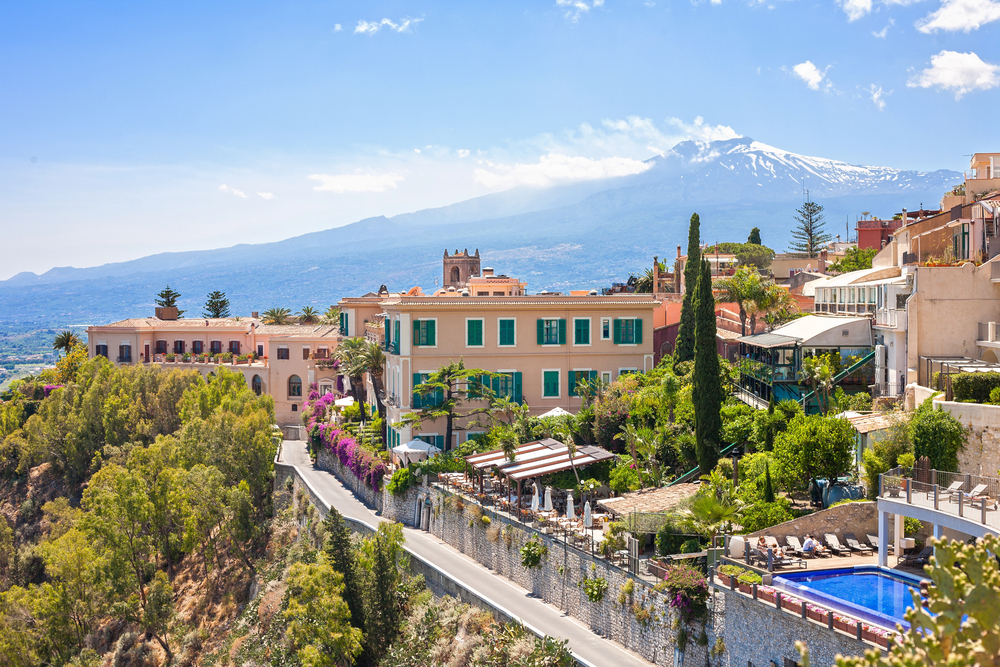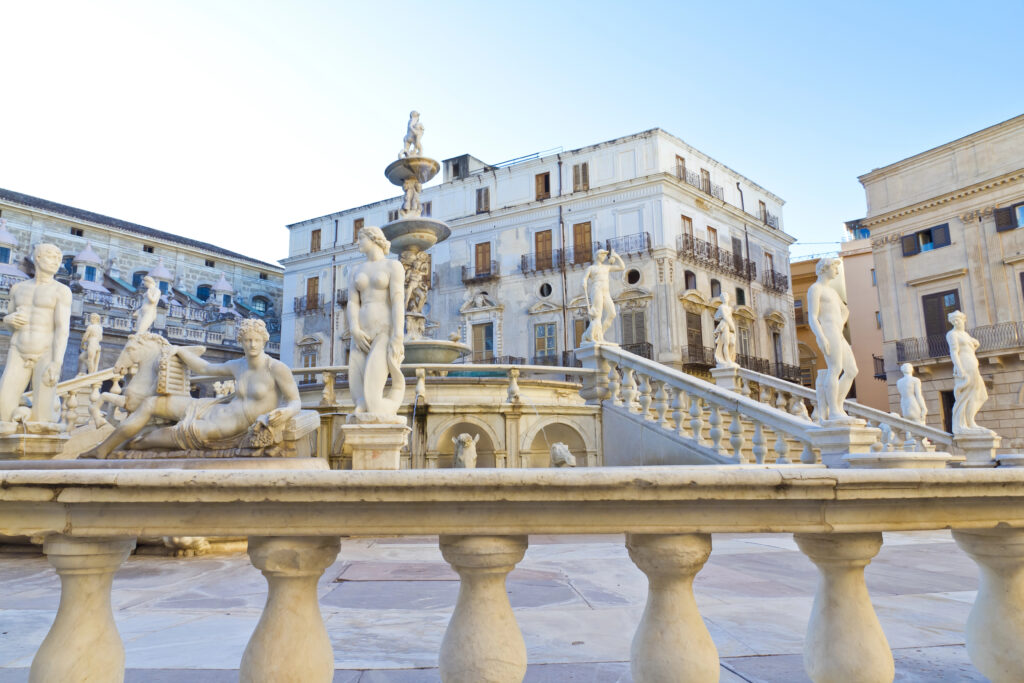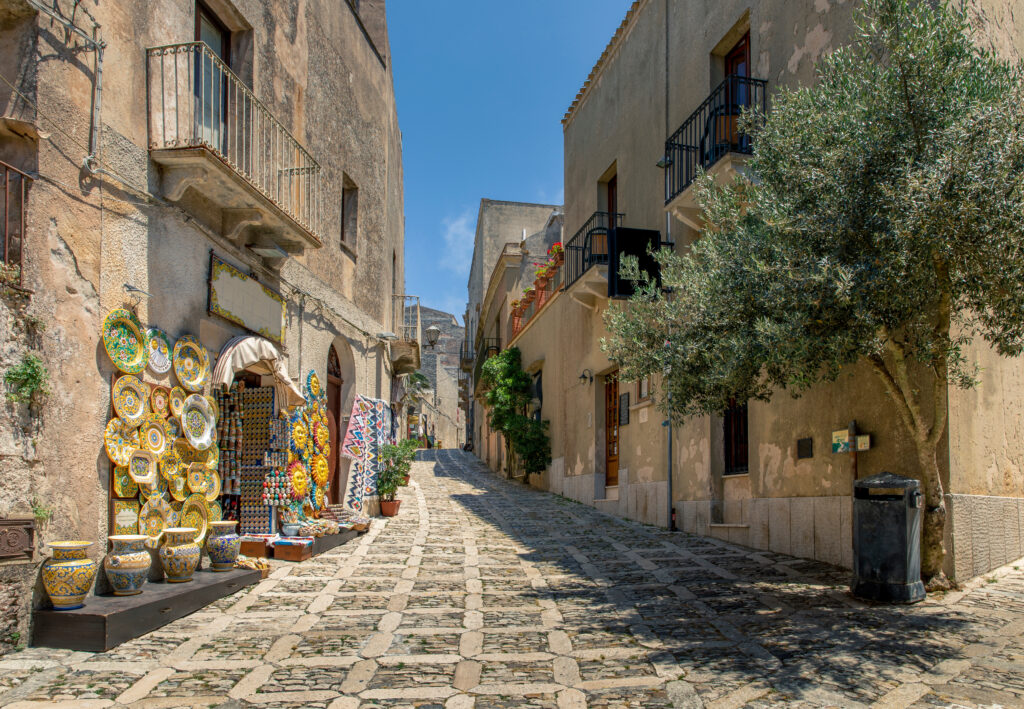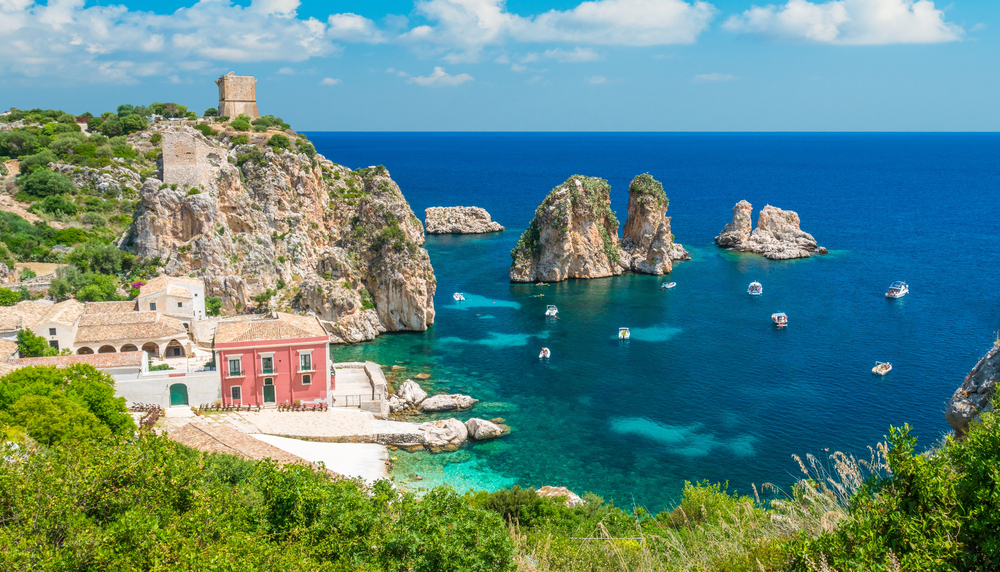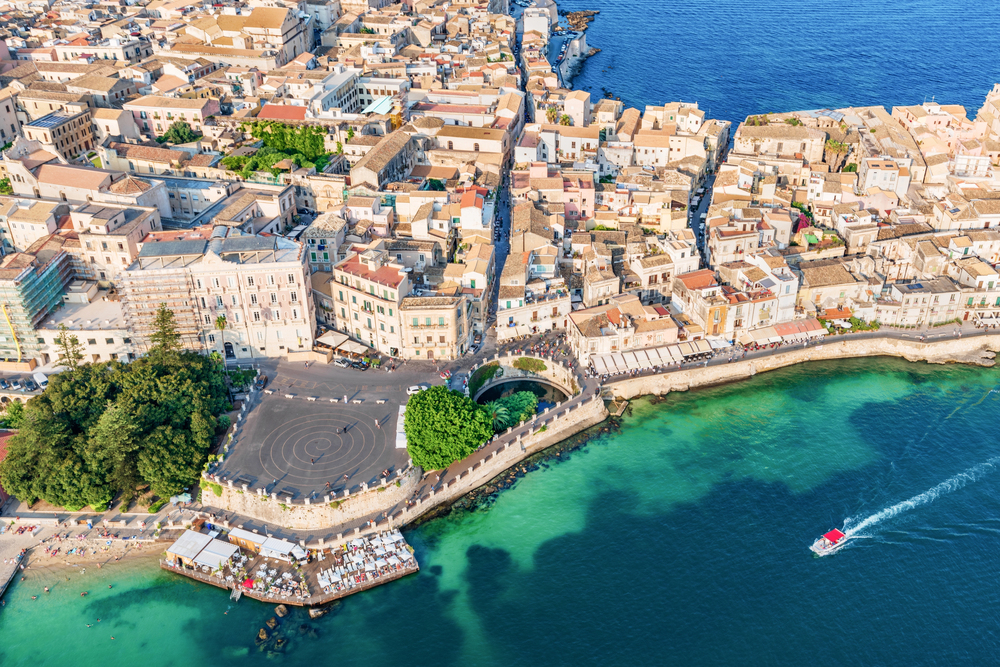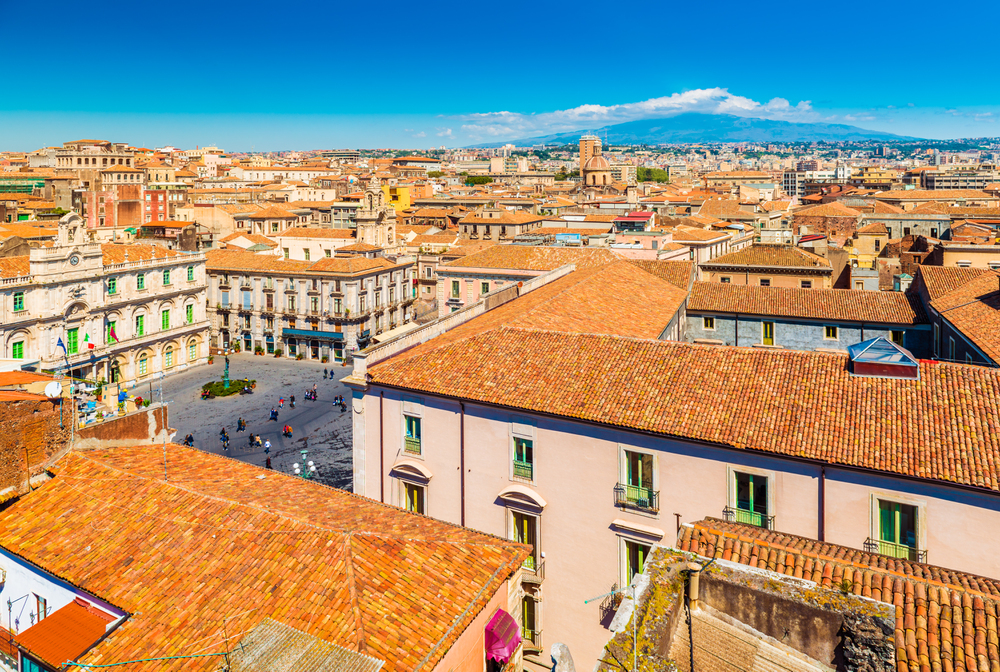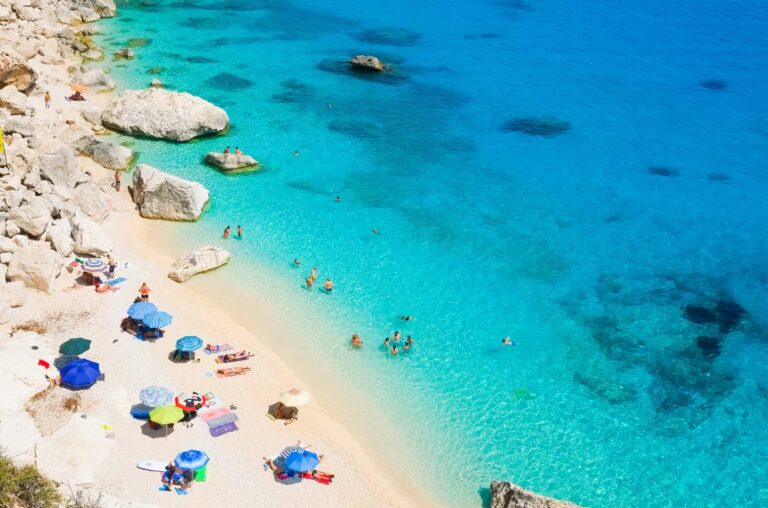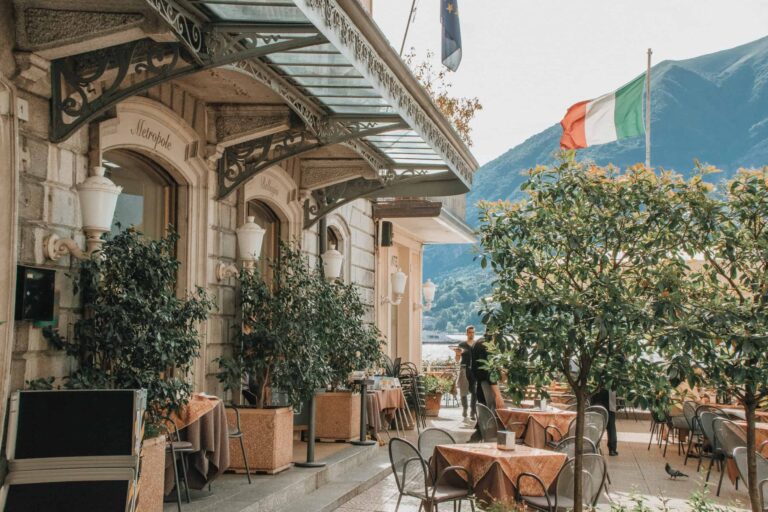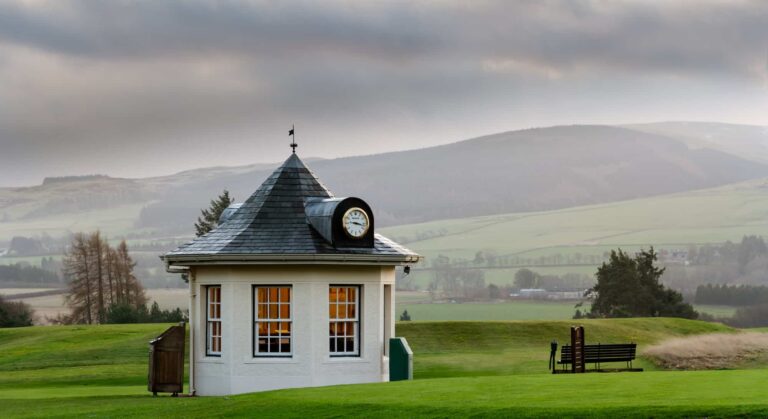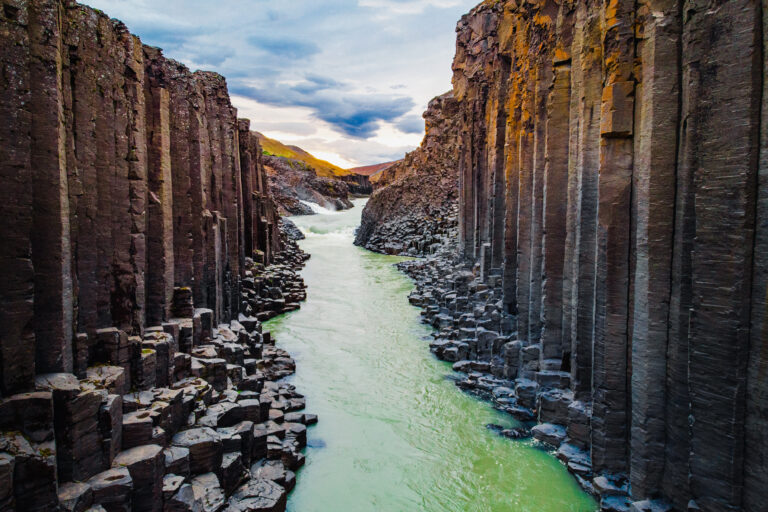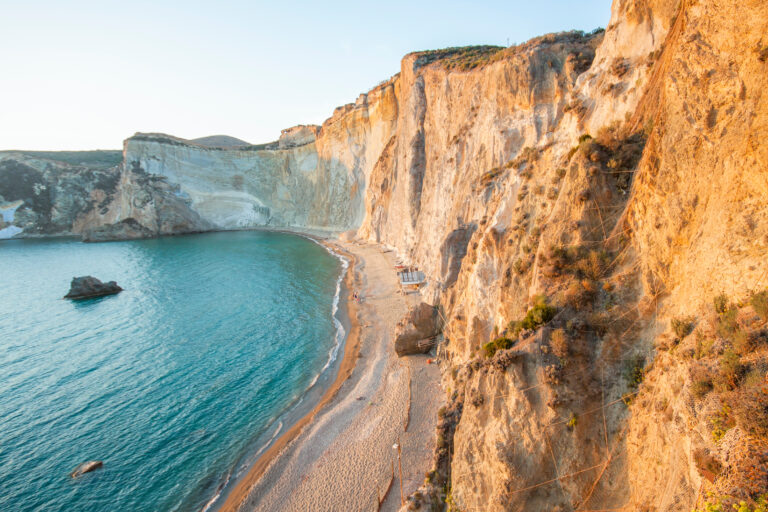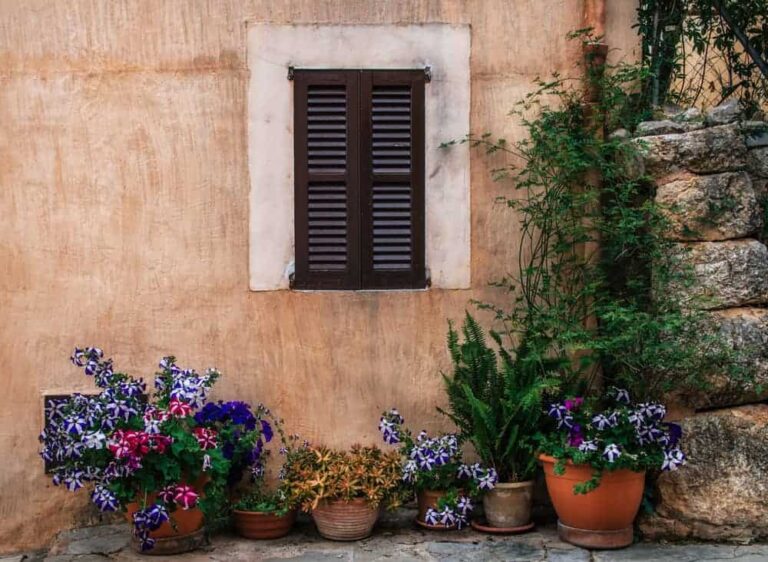Best Things to do in Sicily, Italy: Plan Your Sicily Tour!
The best things to do in Sicily relate to its rich layers of heritage. The largest island in the Mediterranean, Sicily is a multi-faceted cultural mosaic of art, architecture, cuisine, customs and local lore.
Sicily’s history reflects the diverse people who have come to call it home over the millennia. Each of these settlers and conquerors left their imprint on the landscape, which is varied and full of contrasts.
From the scorched peak of Mt. Etna in the northeast to fertile farmlands of the interior, glittering salt pans of the west, and wild windswept white sand beaches of the south, Sicily’s geography is simultaneously rugged, lush, pristine and tranquil.
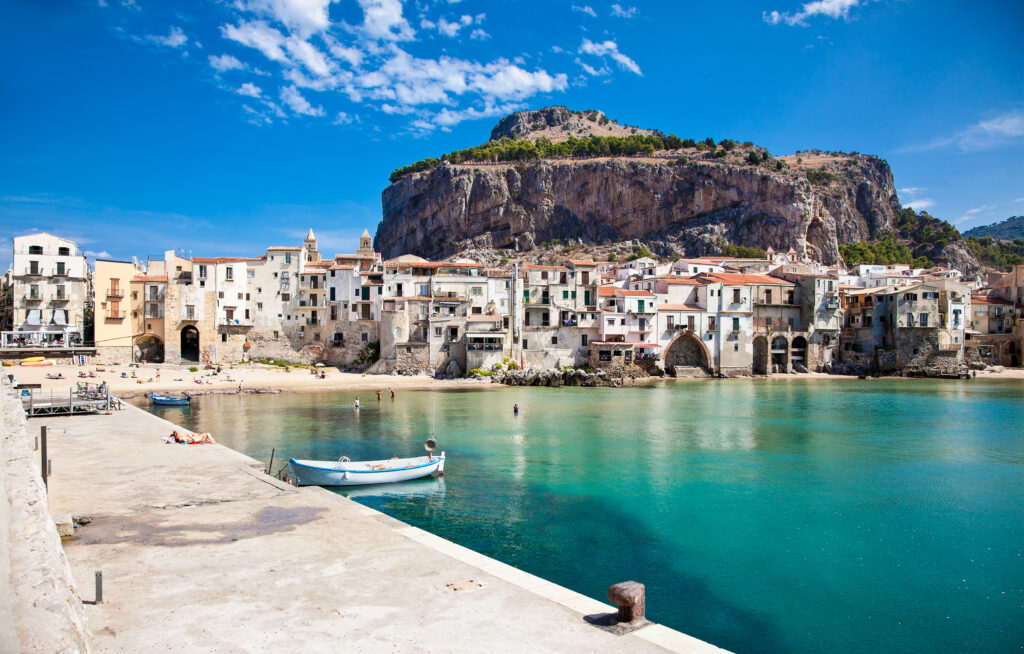
The destinations we recommend range from stunning mountaintop towns with dramatic vistas to a sprawling major metropolis packed with cathedrals and palaces, a charming Medieval seaside village and epic archaeological sites full of colossal and evocative ruins.
Since the 8th century B.C., neighbouring civilisations have coveted Sicily’s natural abundance and strategic location. Those who have left their mark on Sicily include the Phoenicians, Greeks, Romans, Byzantines, Arabs, and Normans. The legacies of those conquerors include incredible amphitheatres, divine cathedrals, tranquil gardens, massive mosaics, and ancient temples – all waiting to be explored!
Our Recommended Itinerary
Our Sicily itinerary takes you from arrival in Catania north to Taormina. From there, we map out a route of cultural attractions along Sicily’s northern coast, with stops in Palermo, Cefalu, and the Custonaci province.
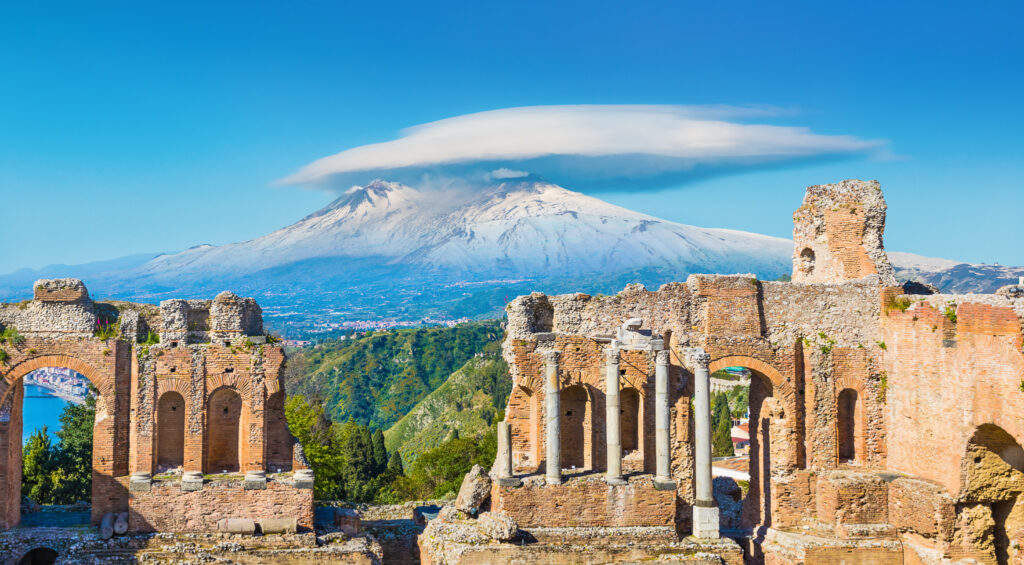
We then guide you to several spectacular locales along Sicily’s west, starting with Erice and going south to Mozia and Agrigento, and then tucking inland to visit the archaeological site of Villa Romana del Casale. From there, we give you the highlights of Syracuse on Sicily’s southeast, before completing our circuit in Catania, with Mt Etna as the concluding finale!
In your journey along the ever-changing scenery of Sicily’s perimeter, you’ll find the constants are a palpable sense of history and exuberant people who delight in sharing their culture with visitors.
TAORMINA
If you land in Catania airport, Taormina is about a 66km drive north, or a slightly longer train ride if you don’t want the hassle of driving. Taormina perches atop a hill, 204 meters above sea level, and the views of the bay and surrounding countryside are spectacular. The site has been occupied and settled since before the Greeks first arrived in Sicily in the eighth century B.C.; no doubt the heights offered security.
Today, Taormina is one of Sicily’s most popular tourist destinations. While it’s often crowded and there is a certain level of kitsch, it is undeniably romantic and atmospheric. With a mixture of ancient, Medieval, Renaissance, and modern architecture, the town has several sights to take in.
Taormina’s centre is pedestrian-only. There are parking lots on the outskirts of town but many people opt for other ways of arriving than driving.
Favourite Places to Stay in Taormina
Corso Umberto
On Corso Umberto, Taormina’s main thoroughfare, join the throngs enjoying the “passeggiata,” or evening promenade. Glide by architecture of the ages: the pedestrian-only street is lined with buildings in the Hellenistic, Roman, Medieval, gothic and baroque styles – one of which housed the town’s police station. Originally a private residence, its dusty rose-coloured façade was etched with the Star of David.
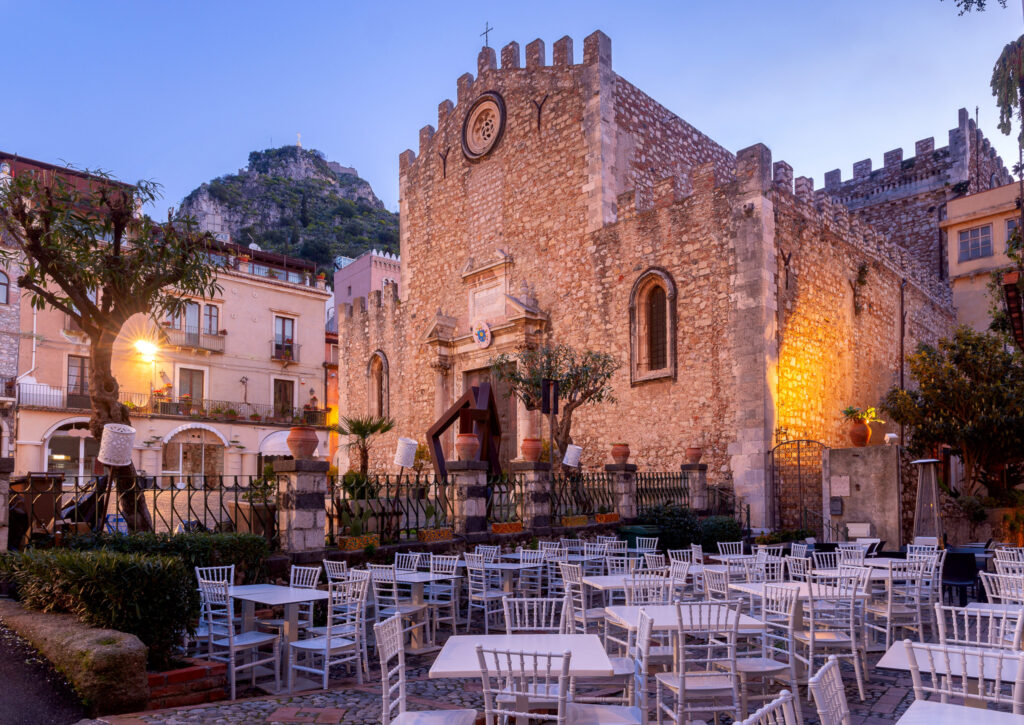
Corso Umberto has been a part of the city since the Greeks first settled in Sicily! It runs from the Porta Messina to the Porta Catania, at just under a kilometre long. “Porta” means door in Italian, and these ancient stone arches were once part of the fortified walls that encircled the town.
Nowadays, Corso Umberto is lined with galleries, shops and alfresco cafes – inviting spots to take a break and people-watch.
Kerameion Ceramics
Sicily is famous for many things, one of them being the maiolica pottery technique. It’s a tin-glazed way of making earthenware that was first brought to Sicily by Arabs from North Africa, and it caught on because of its dazzling colours. It is a distinctively Sicilian ceramic style.
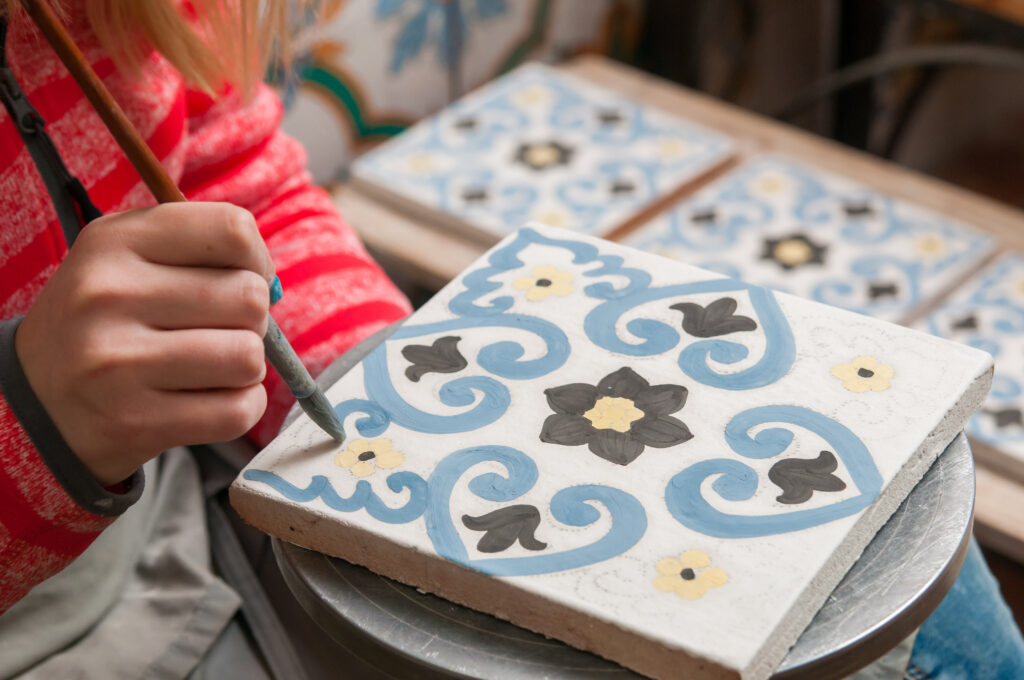
If you’re interested in picking up any examples of this style, Kerameion Ceramics in Taormina is your best bet. It’s one of the most famous manufacturers in this style, and everything is still handmade. The images are opaque, using mineral oxide paints on top of a white glaze atop the ceramic.
Marco Monforte sees his work as “form and colour folding together with poetic harmony, making each piece unique.”
Piazza XI Aprile

If you walk the Corso Umberto, you can’t miss the Piazza IX Aprile. This square is home to the church of San Giuseppe and a clock tower, which overlooks the Mediterranean.
It got its name for the alleged landing of the Italian patriot Guiseppe Garibaldi on April 9, 1860, to unite Italy and Sicily. They got it wrong because Garibaldi didn’t arrive until a month later! Nevertheless, the square commemorates this moment. Lined with cafes, it offers excellent views of the Ionian Sea.
Ancient Theatre of Taormina
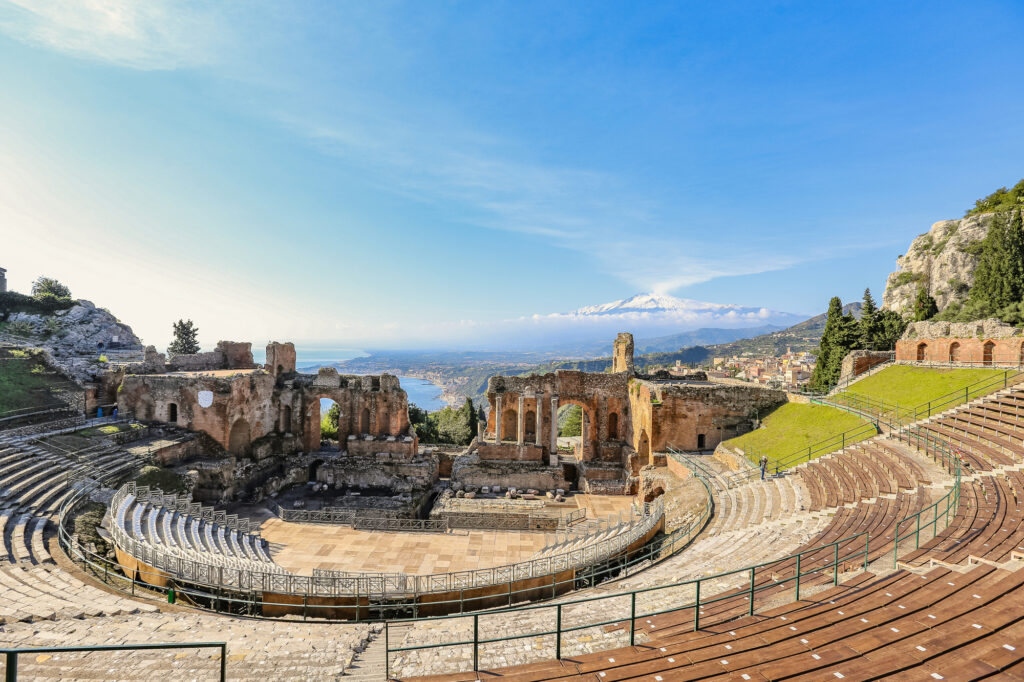
The Greeks were some of the first conquerors of Sicily, arriving in the eighth century BC. They brought with them a love of theatre, and in the third century B.C., they constructed what has to be one of the world’s most magnificent open-air venues.
The Greeks also wanted their theatres among nature, which is why it was set right into Mount Tauro and carved from stone. Much of the theatre has survived to the present day, and it is the second-largest such theatre in Sicily (Syracuse takes the honour for the largest!)
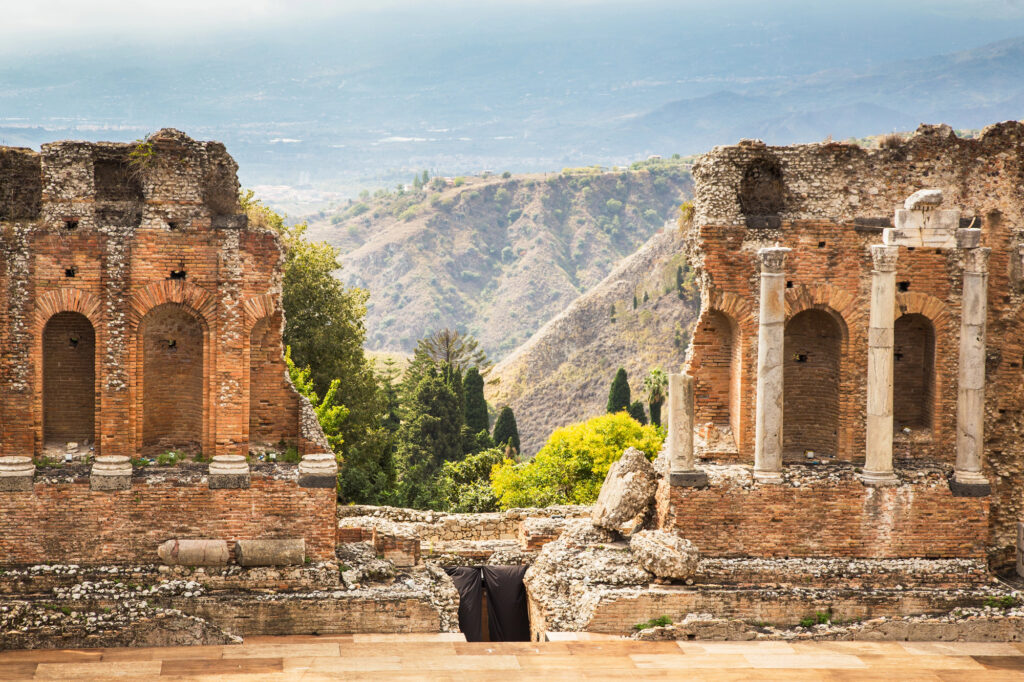
You can walk around and see where the performers acted, where the orchestra or chorus played from the side, and where ancient audiences sat to take in the show.
While some of the columns and adornments did not survive, it is still astonishingly complete. Its opening hours follow the sun, with longer hours in the summertime and earlier closing hours as the days shorten. This is so that visitors can enjoy the sunset views.
Villa Comunale Di Taormina
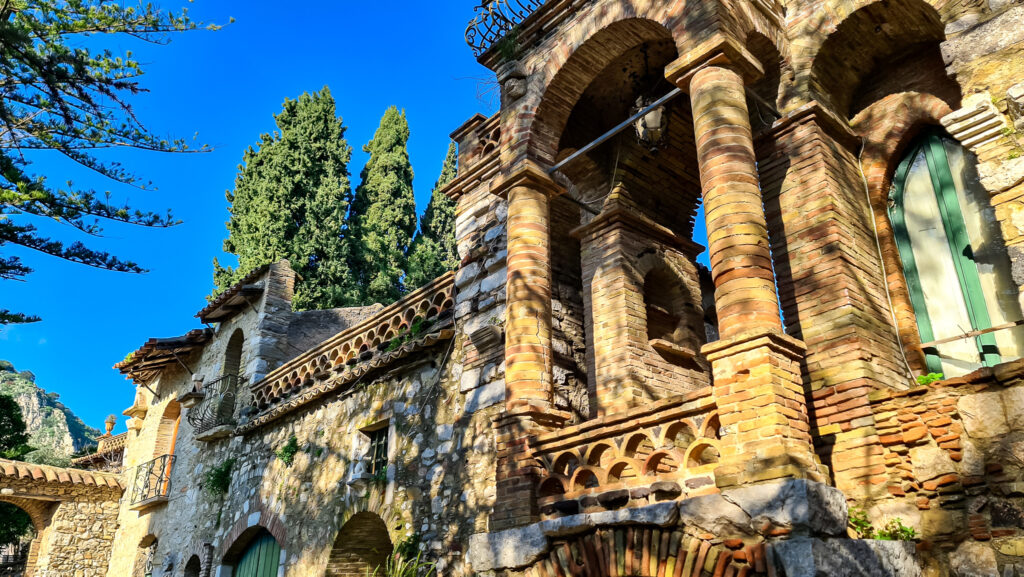
You’ve now gotten a taste of some of Sicily’s ancient influences. The Villa, as it is popularly called, is one of the more modern influences. A Scottish woman named Florence Trevelyan, born in 1852, moved to the area in 1879 and acquired a 25-acre property that she transformed into a garden.
It has been maintained as a botanical garden ever since she died in 1907. It’s a beautiful and peaceful place to walk around and one of the many reasons visitors fall in love with Taormina.
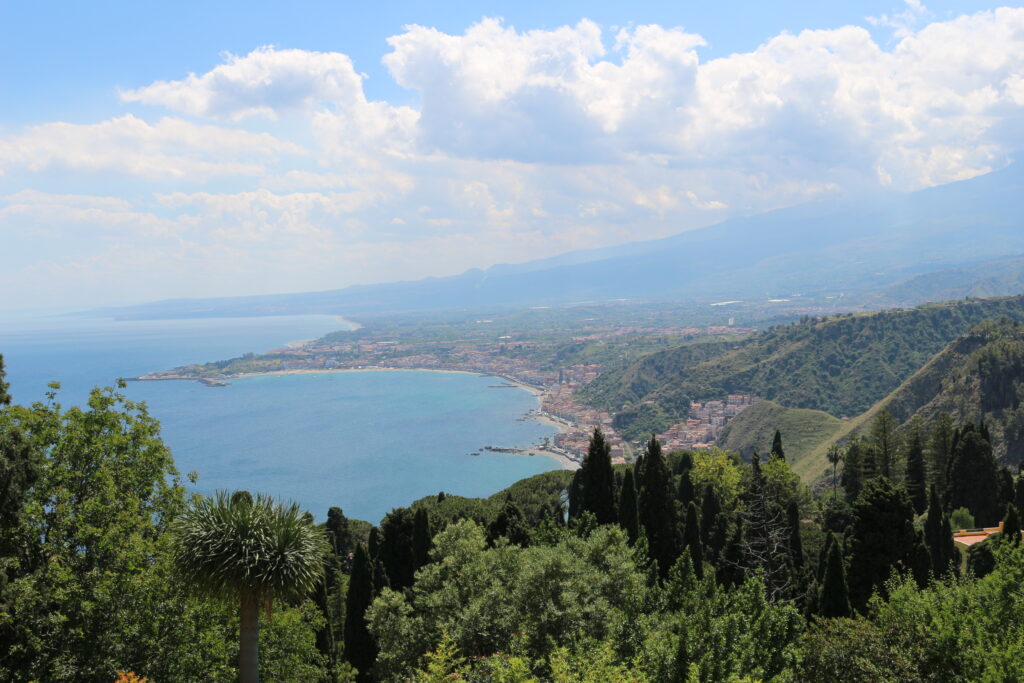
One of the highlights is undoubtedly the famous views from the garden. The bay is on full display, as is Mount Etna. Another highlight is the so-called “follies.” Follies were a common Victorian decoration and looked like jury-rigged treehouses. Their purpose was to provide an atmosphere, and allow visitors to enjoy elevated views.
CEFALÙ
Located about two and a half hours from Taormina by car, or five hours by train, Cefalu is on the northern coast of Sicily. Roughly translated to “cape” from the ancient Greek language, this enclave is dominated by a tall promontory that rises nearly three hundred meters above the town.
It’s a small town, numbering just over 14,000 people, but this compact heritage site is one of Sicily’s most popular tourist attractions. One of the reasons for that is the glimpse it offers into the Arab-Norman heritage for which it is known.
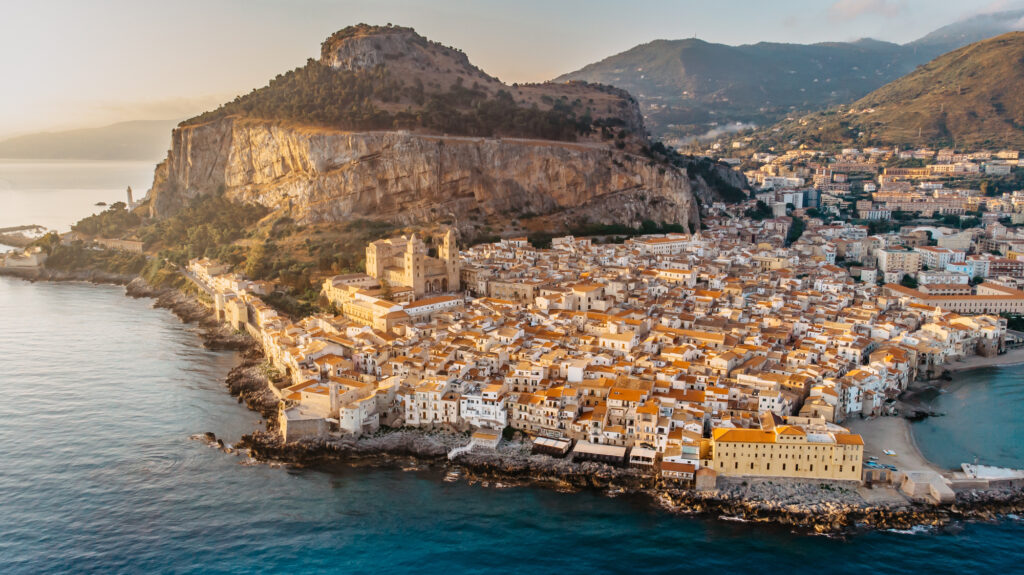
Cefalu has also been home to Greeks, Carthaginians, Romans, and Byzantines! Their imprint on the town is palpable and you can almost feel you are brushing arms with the ancients in the old quarter.
Enjoy a full leisurely day in Cefalu, meandering through its narrow crooked streets, soaking up the sun, and savouring a delicious seafood meal.
Favourite Places to Stay in Cefalù
Cefalu Cathedral
Cefalu is built on a gradient, sloping downward to the sea from the Cathedral, which is set against the backdrop of the magnificent La Rocca, another name for the dramatic headland.
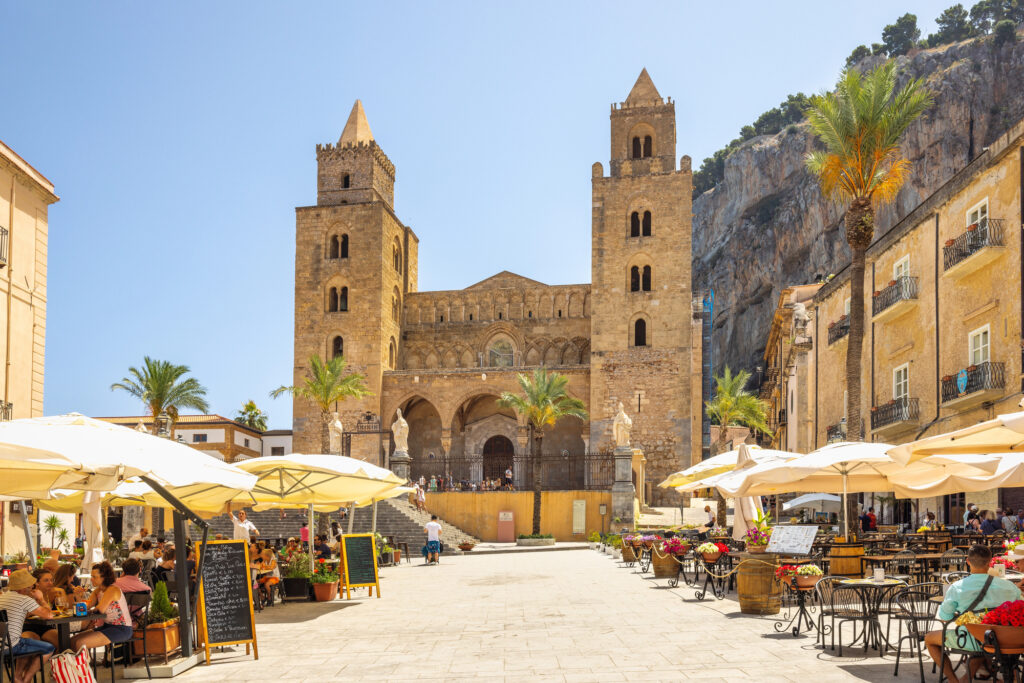
This edifice was built by Norman King Roger II after a storm nearly drowned him before he washed up on a nearby beach; in gratitude, he built the cathedral.
Beautiful mosaics, adapted from the Byzantines, are present throughout the cathedral, designated a UNESCO World Heritage Site because of its unique architectural style.
Laid out at the feet of the Cathedral is the Piazza del Duomo, lined with cafes and restaurants. This is a wonderful spot to have lunch or a cappuccino and soak up the atmosphere.
Cefalu Old Town and Harbor
From the Piazza, head down Via Mandralisca to the medieval harbour. En route, pop into the Museo Mandralisca. A local art museum, it hosts collections from the Mandraliscas, a local family who collected art and treasures during the Renaissance. One of the highlights is the “Portrait of a Man” by Antonello da Messina.
Arriving at the harbour, you can witness a scene that has likely played out for millennia. From the pier, enjoy watching the locals swim in the gentle sea that laps the foundations of ancient stone buildings lining the shore.
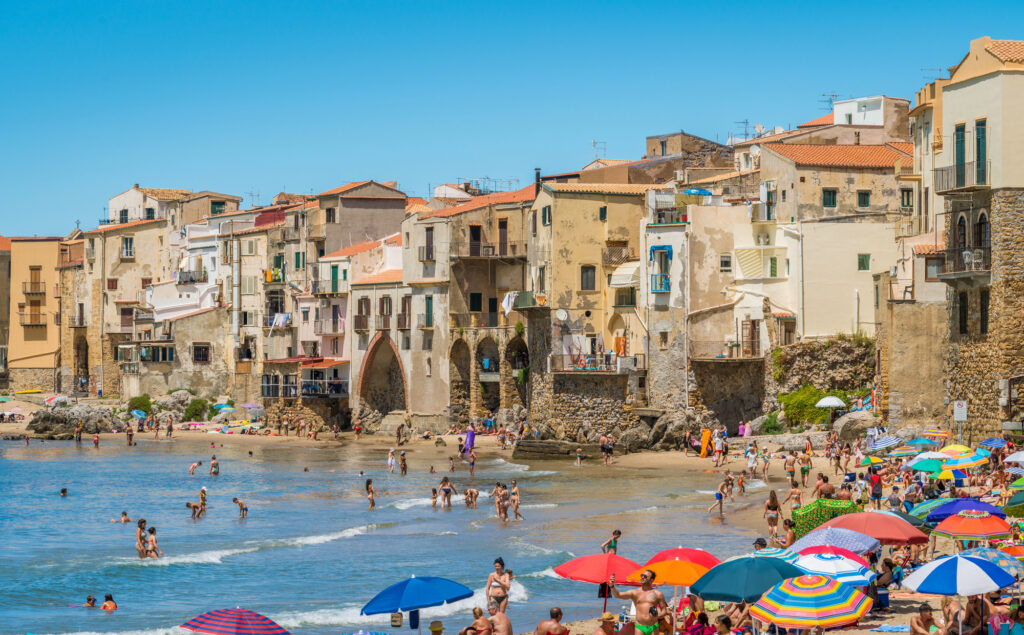
To the east, beyond La Rocca, is Porto di Presidiana. It’s a ten-minute walk from the city centre, and where many of the hotels are located. In the summer, ferries depart here to take visitors to the Lipari Islands. Even if you don’t fancy a boat ride, it’s worth walking around and enjoying the sea breeze.
Just a short walk from the city centre to the west are sandy beaches lined with seafood restaurants, where you can cap off your sightseeing with a refreshing swim. If you want to while away an afternoon in comfort, there are vendors here who rent beach chairs and umbrellas.
PALERMO
An hour west by train or car from Cefalù is Palermo, the largest city in Sicily, and one of the most storied. It’s the capital of the island and is over 2,700 years old. It’s also a very large city, with a metropolitan population of over a million. To have a meaningful exploration of the city, you’d be advised to spend at least three days here to take it all in. You won’t regret it!
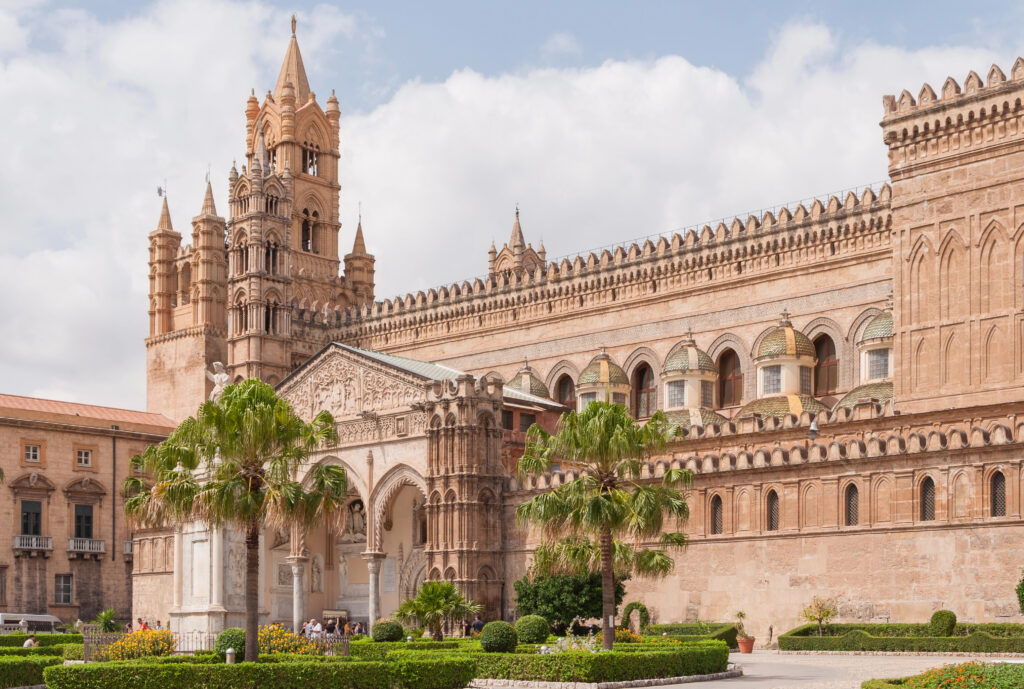
If Taormina evokes the influence of the Greeks on Sicily’s architectural heritage, then Palermo offers a deep dive into the cultural legacy of the Arabs and Normans.
Cefalu’s Cathedral was a mere appetiser to the banquet of Palermo’s Arab-Norman heritage. The result of this intermixture is a unique synthesis of multiple cultures, and you can see this in Palermo’s architecture and arts. Byzantine, Arab, and Norman, as well as earlier influences all come together here!
Favourite Places to Stay in Palermo
Orto Botanico Palermo
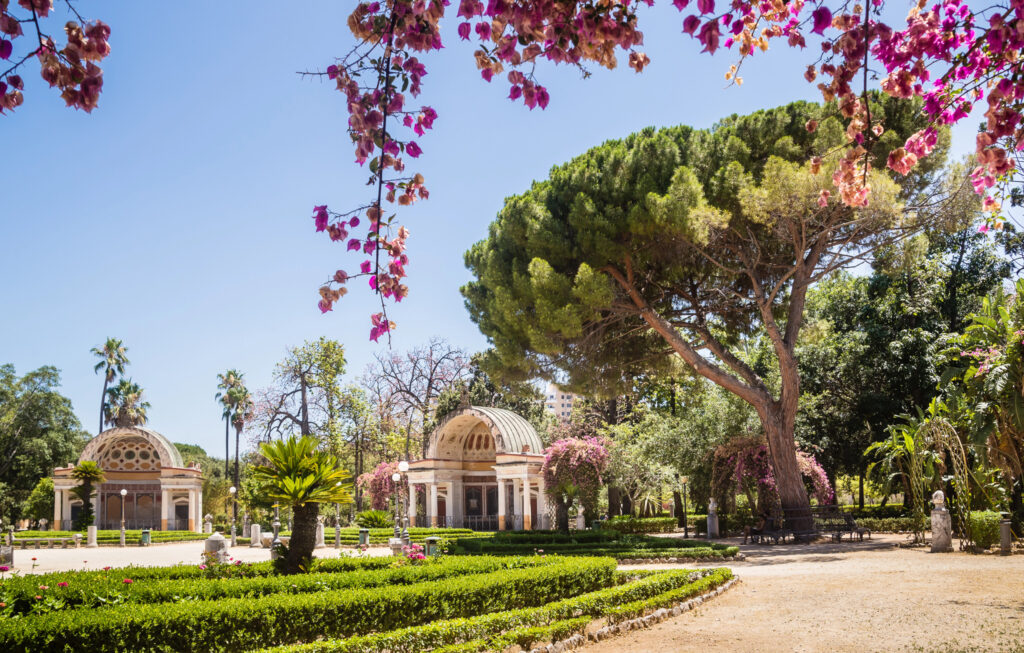
Palermo’s botanical garden was founded in 1779 as a way for the local university to better study botany. It’s home to 12,000 different plant species, and the gardens served as a model for other cities to develop their botanical gardens.
Covering approximately 30 acres, it is perfect for a quiet walk when you want to get away from the bustle of the city. It’s even home to some parrots that escaped from a nearby aviary!
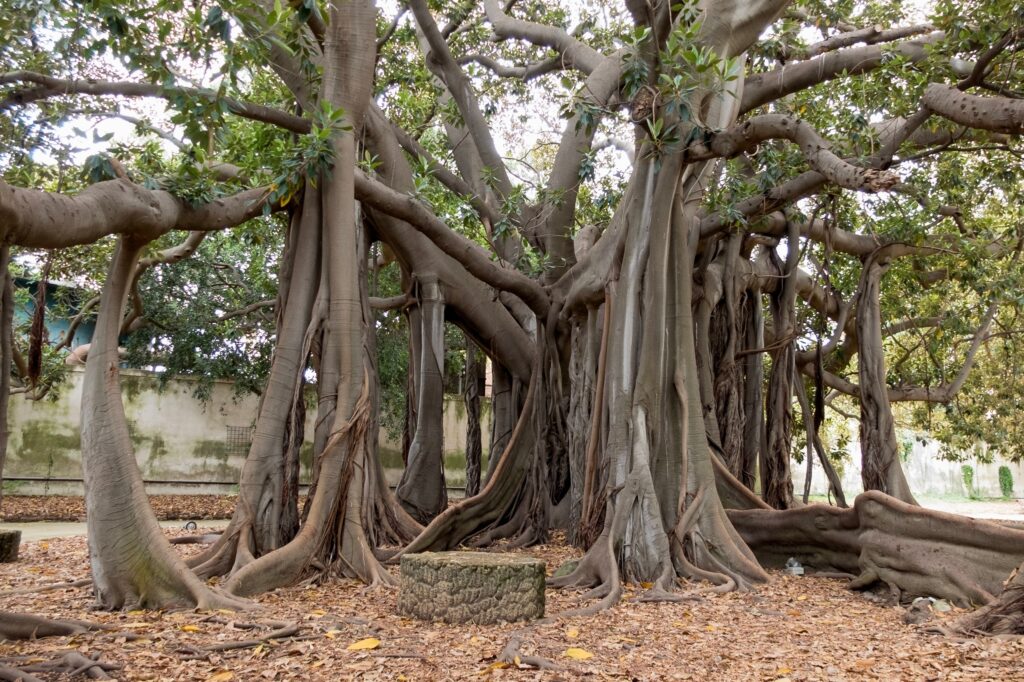
Within the park, you’ll find the so-called “King Ficus”. Originally brought here from the Norfolk Islands in 1845, it’s now enormous! The centenarian tree is gnarly and intricate – well worth an extended visit.
Keep in mind that the Orto Botanico is a bit wild and rugged, so if you’re expecting a perfectly manicured garden, you might be disappointed.
Piazza Pretoria
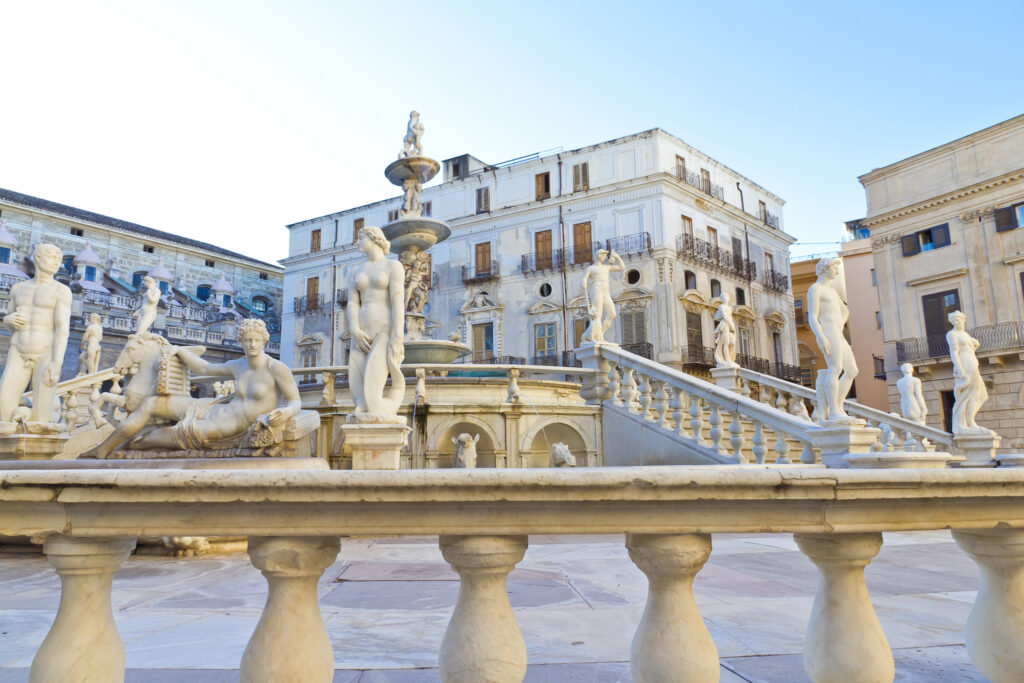
Also known as the “square of shame” the centrepiece of the Piazza is the Praetorian fountain in the centre. Built for a member of the Medici family, it was bought at the last second in the sixteenth century by Palermo’s ruling family and brought to the city.
How it got its nickname is a source of local controversy: some blame the presence of the nude sculptures in the Piazza, while others attribute it to the corruption of the Pretorio ruling family. Regardless, it’s one of the most striking parts of Palermo. It is flanked by the churches of Saint Catherine and Saint Joseph dei Treatini.
Cappella Pallatina Palermo
The pièce de résistance of Norman-Sicilian architecture? The Cappella Pallatina or Palatine Chapel is one of the best examples on the island. Built by the same king who constructed Cefalu’s cathedral, it draws on the same mix of architectural styles Sicily is famous for. It’s part of the Norman Palace and is a UNESCO World Heritage Site.
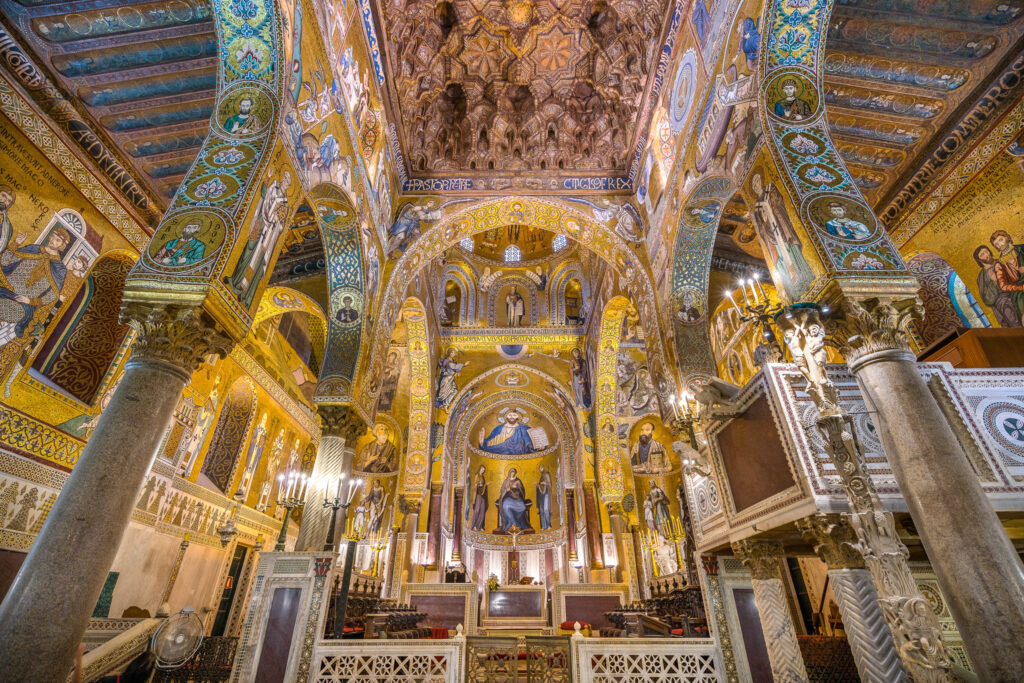
A key highlight is the beautiful mosaics on display. Some, created by Byzantine artists, feature Saints from the Greek Orthodox Church; others, done later in the Latin tradition, depict stories.
The Murqarnas ceiling, named for the ornamented vaults common in Islamic architecture from this period, is decorated in the style of the Fatimids. Allegedly, Roger II decided to build the chapel to send a message to other rulers that he had no intention of giving up his rule of Sicily.
Antonio Pasqualino International Puppet Museum
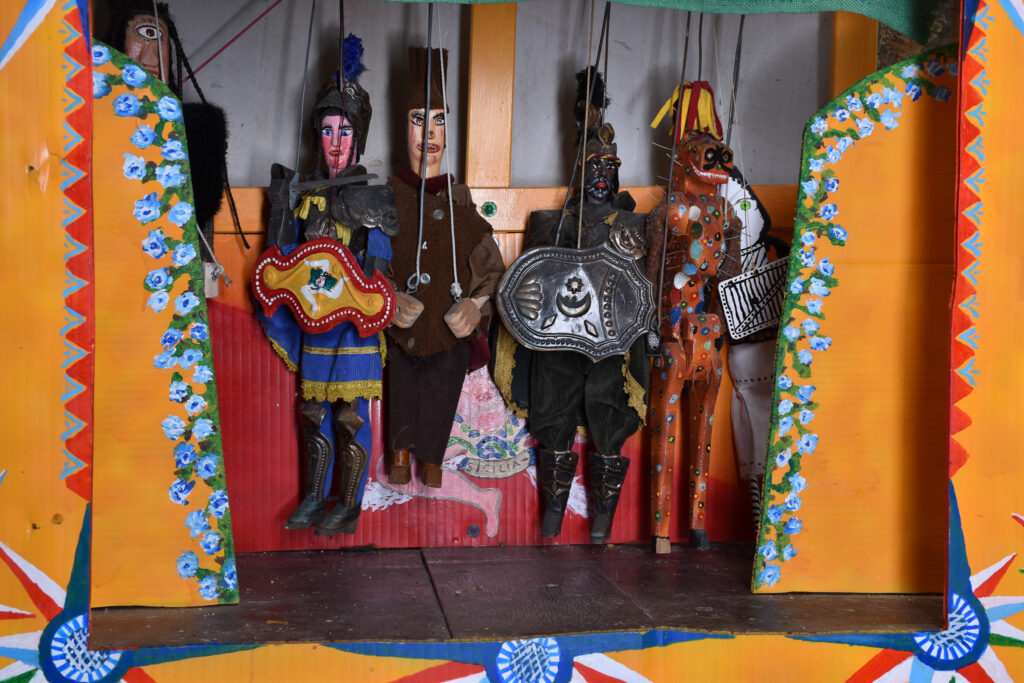
Need a break from all of the beautiful architecture? Step into Palermo’s puppet museum! Formally known as the Antonio Pasqualino International Puppet Museum, it is home to 4,000 puppets, marionettes, and other theatrical machines.
If you want to see Opera dei Pupi, a local Sicilian puppet style, this is one of the best places to do it. It is housed in the old Hotel de France near the centre of the city.
NORTHERN SICILY
From Palermo, head westward along the coast. Often overlooked by travellers, this region of Sicily provides fascinating insights into how the topography and coastline have shaped the lifestyles of its conquerors and subsequent generations.
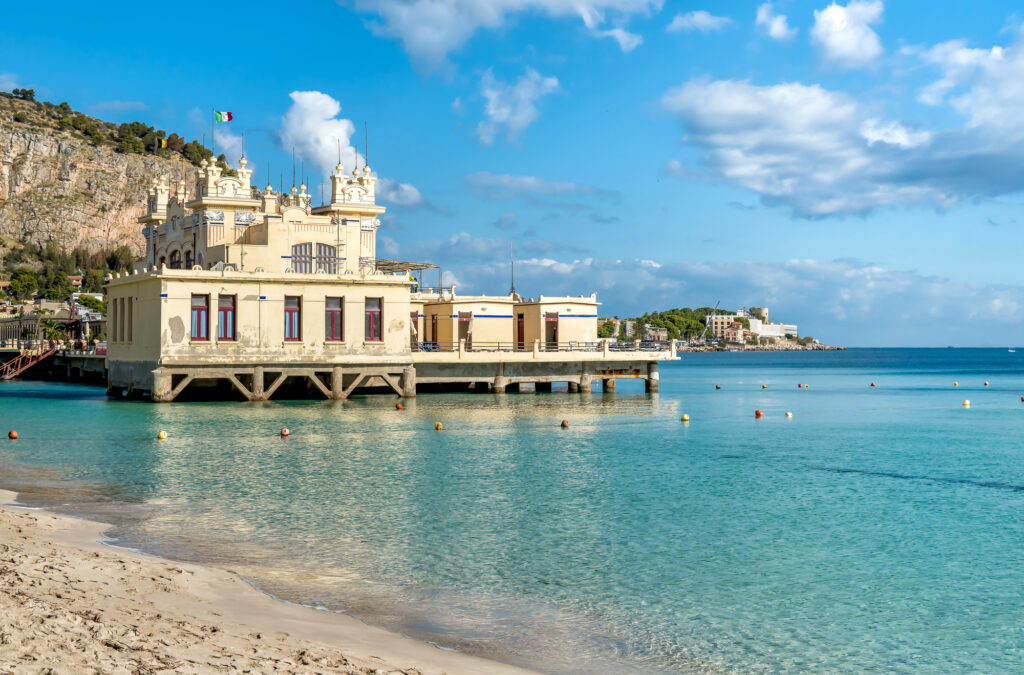
About an hour and a half drive from Palermo are a trio of sites in Custonaci Province that offer an opportunity to spend time outside in spectacular scenery. Sicily is known for its ravishing beauty and this area southwest of San Vito Lo Capo is the perfect spot to connect with a spectrum of natural delights.
Grotta Mangiapane
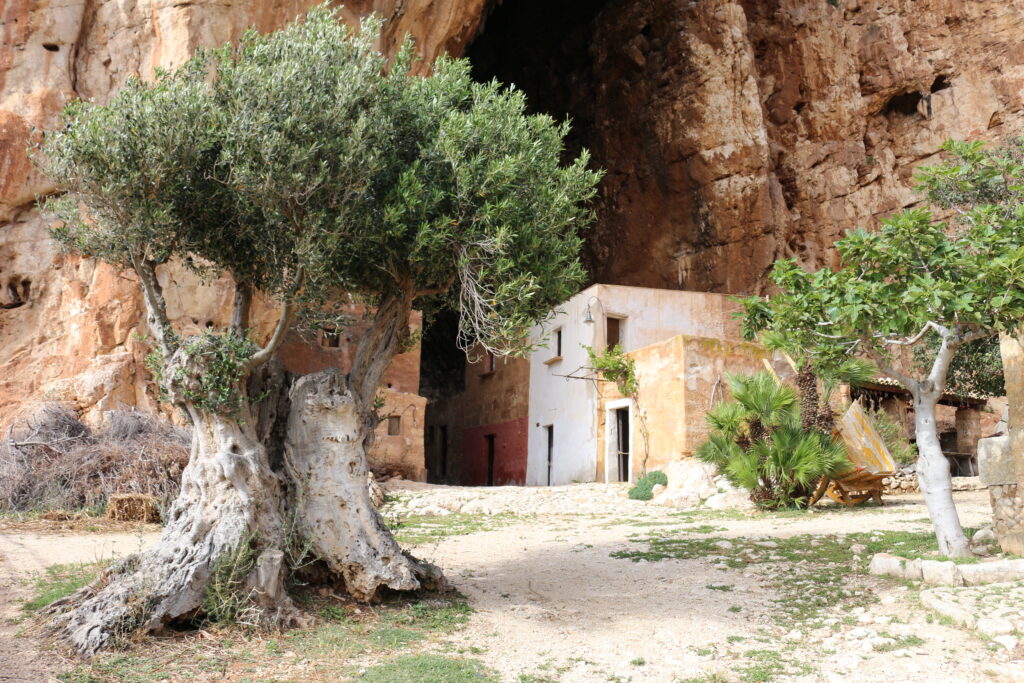
Behind the village of Cornino is Grotta Mangiapane, also known as the Scurati Caves. A small settlement lived here for generations, from the 1800s to the 1950s. There are several rooms carved out of the rock where community members plied their trade, all set up as though still in use today: a miller, baker, candlestick maker, barrel maker, winemaker, barber, and much more.
Eventually abandoned, descendants of the inhabitants later preserved it as it was, turning it into an open-air museum and allowing visitors to see what life in rural Sicily was like.
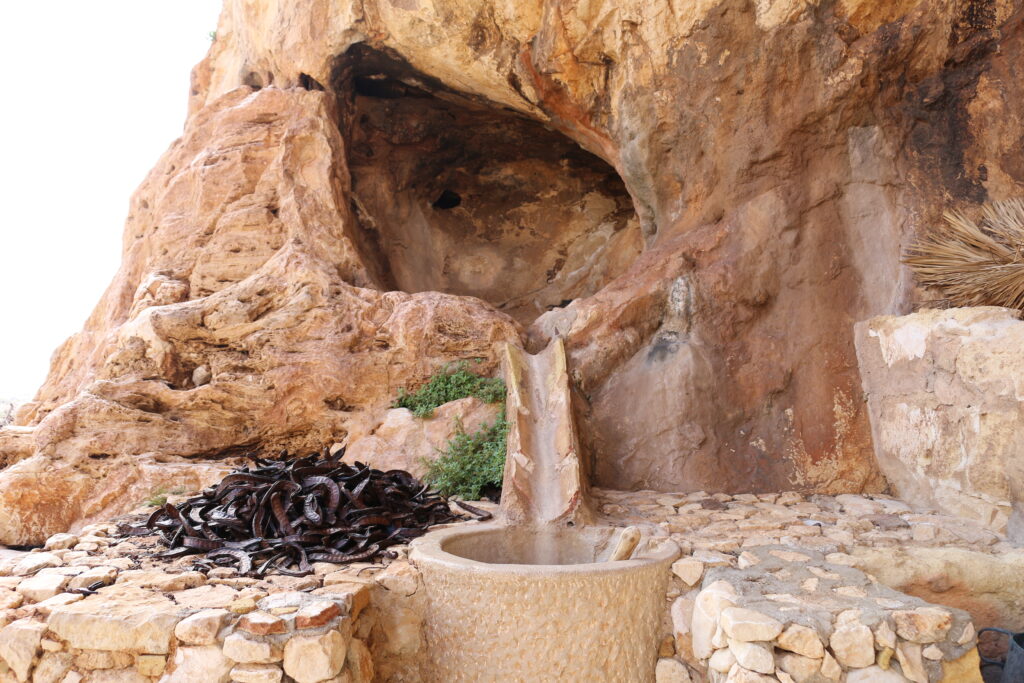
The cave extends 50 meters deep into the mountain from a cavernous opening more than 70 meters high. A cistern carved into the rock face is a testimony to the ingenuity and sheer hard work of its former residents.
Monte Cofano
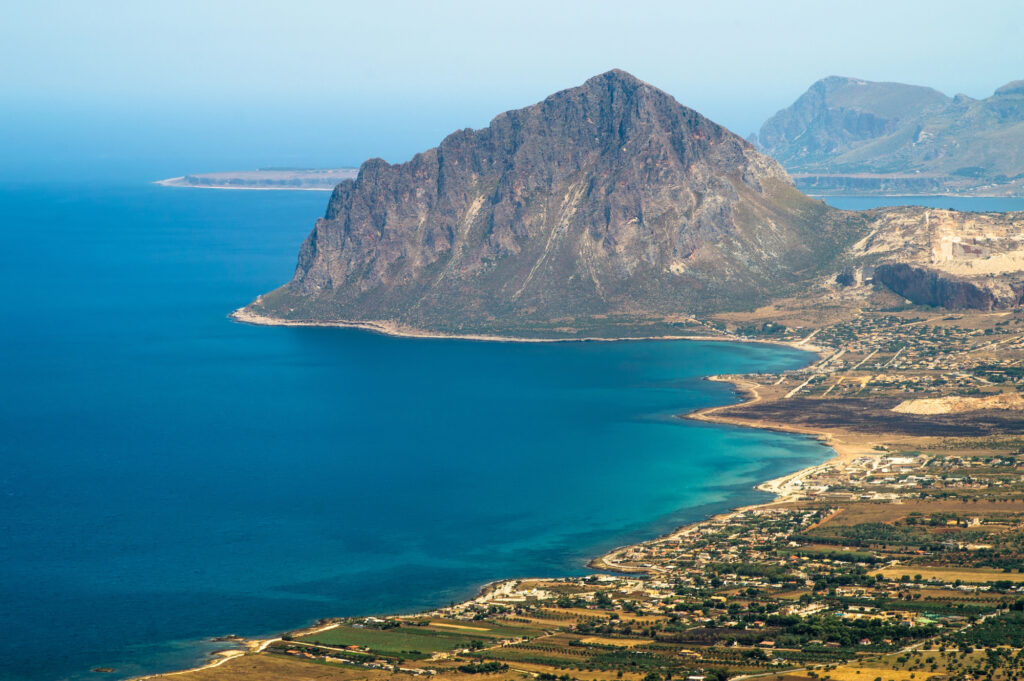
Gaining elevation is an excellent way to appreciate the geography of Sicily, and one of the best places to do this is at Monte Cofano. Within walking distance from Grotto Mangipane, this limestone mountain climbs to a height of 659 meters.
From Baglio Cofano, there is a 10km coastal trail loop that takes about four hours, as well as a more challenging 3km hike that goes to the summit, offering stunning views of the Mediterranean. The latter is only for experienced climbers though, with rock scrambles, boulders and a rope ladder to ascend!
Macari Beach
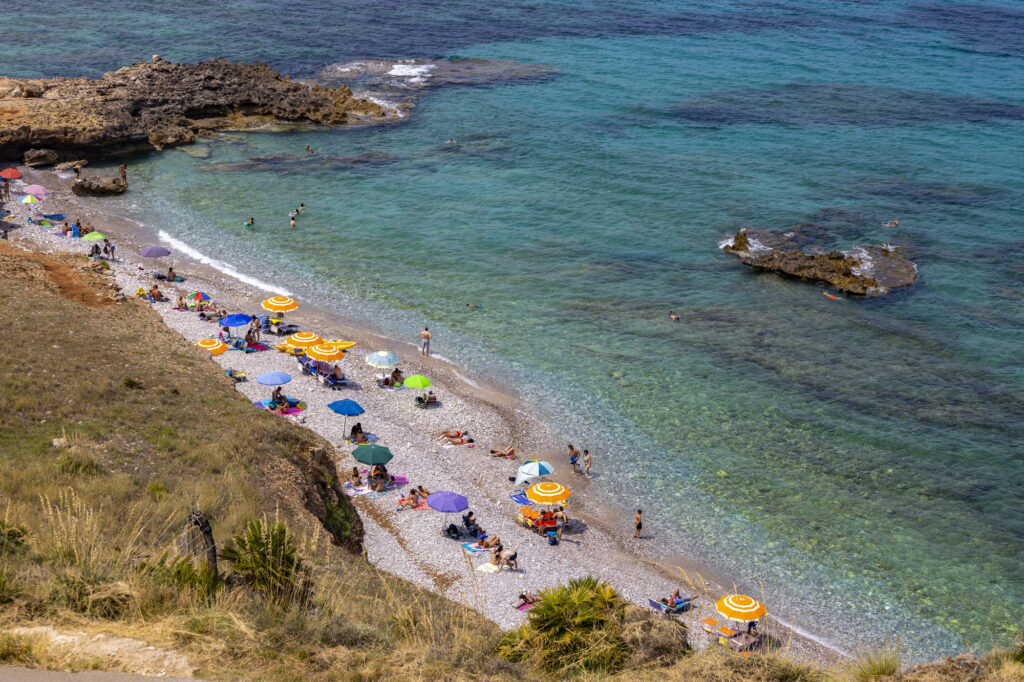
After hiking Monte Cofano, a little time on the beach might be called for. Macari Beach is an intriguing alternative to the more crowded beaches of the nearby holiday town of San Vito Lo Capo. The topography of the shoreline features both a sandy/pebble area as well as several rock pools that are volcanic in origin.
The water is a gorgeous translucent aquamarine and the views of Monte Cofano and Monte Monaco at the northern tip of the San Vito Lo Capo headland are mesmerising.
ERICE
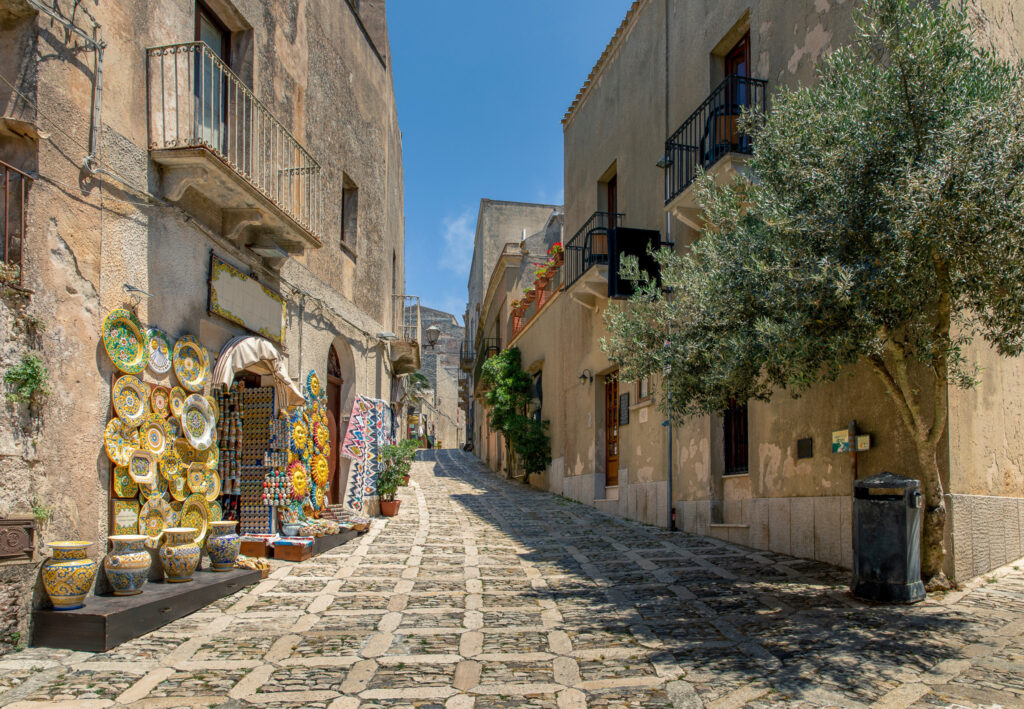
From the Custonaci area, move on to Erice next. Originally a Phoenician colony, it was settled at various times by all the different groups that came to Sicily. About a 50-minute drive south by car, it’s a town atop Mount Erice. It offers stunning views of the surrounding landscapes. It has even more of the beautiful architecture you’ve now come to expect from Sicily.
Favourite Places to Stay in Erice
Cable Car in Erice
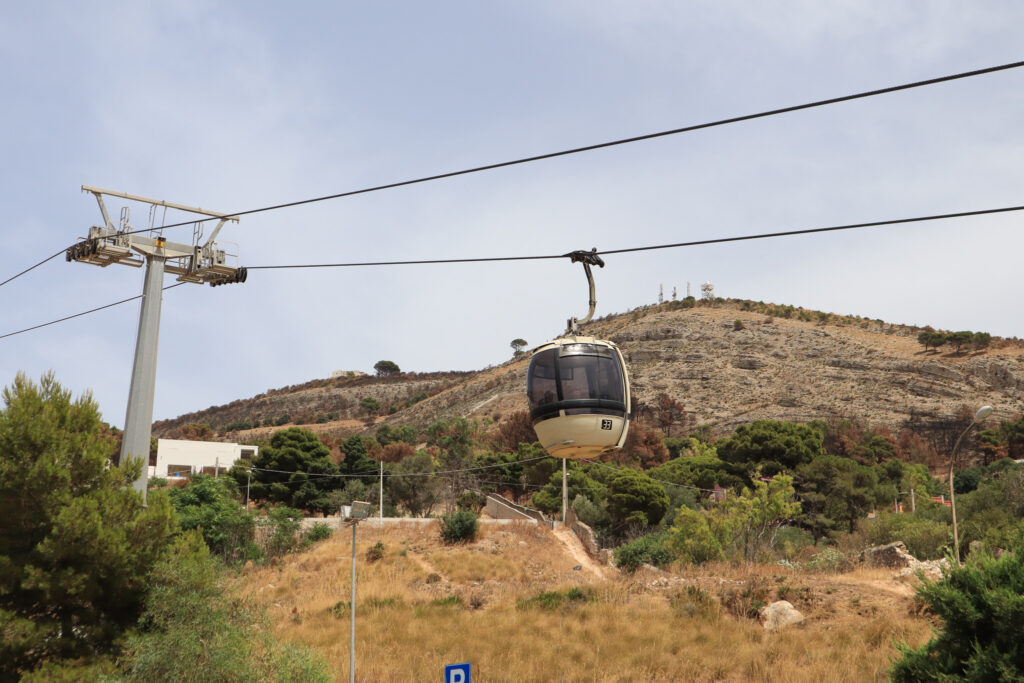
Have you ever driven on a winding mountain road, in rural Italy, while it’s enshrouded in fog? Unless you’re an adrenaline junkie, it’s an experience worth skipping. Thankfully, Erice helps you do just that.
Instead of driving, jump on the cable car that runs from the nearby town of Trapani to Erice. You’ll get to take in the view with none of the stress. Return tickets cost eleven euros, with reduced rates for kids.
Church of San Martino
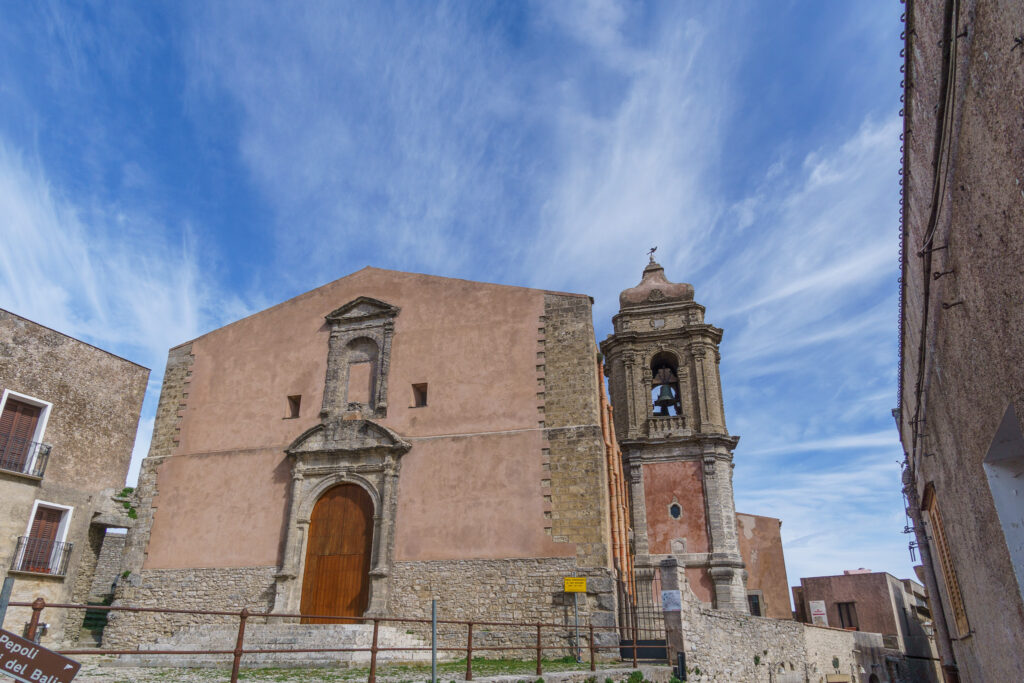
There’s no shortage of beautiful churches in Sicily, but the Church of San Martino stands out. Originally built as a Gothic church in the 1400s, it was torn down and then rebuilt in the 1600s before several neoclassical decorations were added in the 18th century. It’s located in the square of the same name.
The artwork is more in line with what you’d expect from the Reformation, so it’s different from what you might have seen elsewhere on the island. The pristine white walls and lace-like monochromatic ceiling create an airy and celestial ambience. Melodic classical music wafts through the elegant space, enhancing what is a heavenly experience.
Castle of Venus
The Castle of Venus is another Sicilian site that’s endured many adaptations over the ages. According to lore, in ancient times, there was a temple to Venus here that had been founded by her son, the Greco-Roman hero Aeneas.
The site has a connection with another figure of myth, Heracles, who battled the Elimian king as part of his effort to fulfil his Twelve Labors.
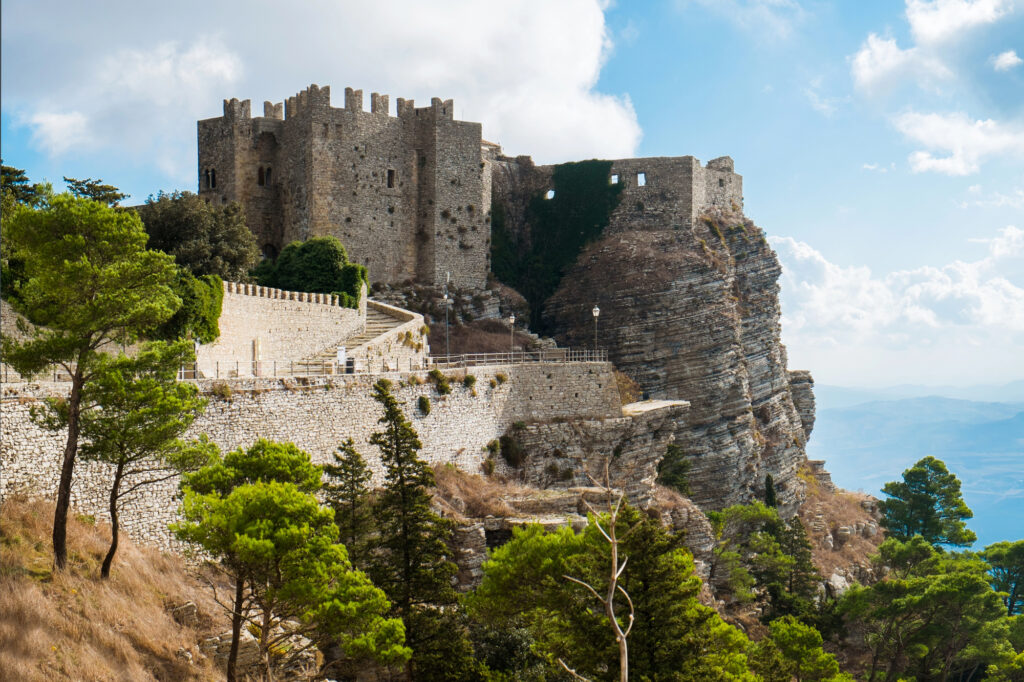
In yet another legend, the Norman count Roger I conquered the heights of Mt Erice thanks to a dream. He and his troops arrived on Sicily in the 11th century, intending to overtake the island from the Arabs who had held it since the 8th century.
He successfully vanquished the Sarcerens, as the Sicilian Arabs were known, across the island but they resisted him mightily atop the Erice stronghold. In a vision, Roger was shown a route by the Virgin Mary to successfully defeat the Arabs. He erected the edifice you find today and dedicated it to Mary.
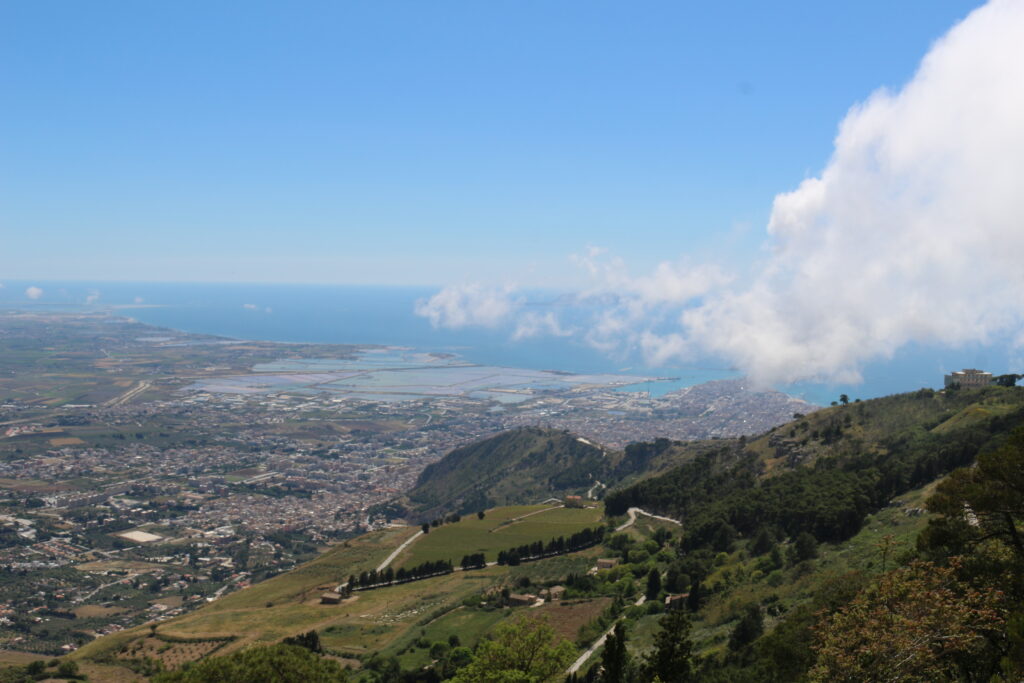
A long climb is necessary to reach the apex of Erice, but the panorama from its heights is well worth the effort. Adjacent to the castle is a spacious viewing area from which to admire the Bay of Trapani below, and behind, the English-style Balio gardens.
This small, shady manicured retreat is a great place to sit with a refreshment and appreciate not only the magnificent expanse of sky and sea, but also have a vantage point in the other direction, which showcases Erice’s Medieval rooftops.
Maison Altieri
As I’ve mentioned previously, Sicilian ceramics are a treasure – and Erice is home to a beautiful ceramics shop, Maison Altieri. Founded in 1882, Maison Altieri is a part of the maiolica tradition. Today, the shop is still managed by the family that founded it, and they’re making the same beautiful porcelain.
TRAPANI
About a half hour’s drive southwest of Erice lies Trapani. This city of about 70,000 inhabitants was built around harnessing the natural resources of its coastal position. The economy today is still based on the area’s natural landscape: fishing, canning, salt harvesting and marble quarrying.
While it’s a large metropolitan area, I was struck by its neighbourhood feel and a real sense of community.
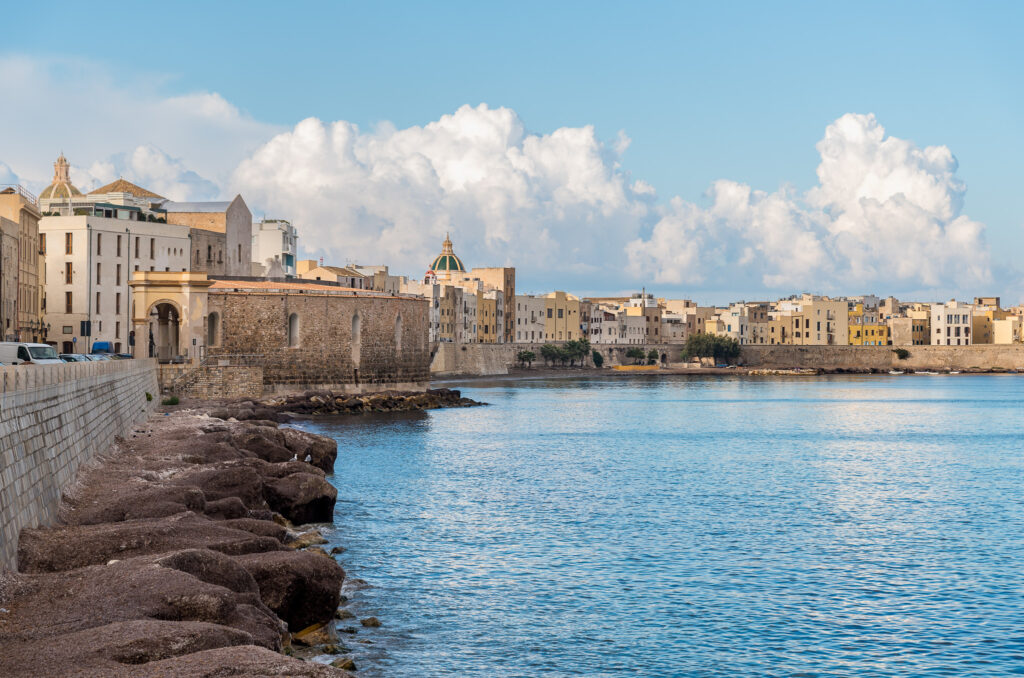
Originally settled by the Iron Age Elymians, an early Sicilian tribe, the city’s name actually comes from the Greek Drépanon meaning “sickle” – due to the curving shape of the shoreline. In myth, the land was created when the goddess Demeter dropped a sickle while searching for her daughter Persephone, who Hades had kidnapped.
Like much of Sicily, Trapani has a storied history under the rule of diverse civilisations. It was captured by the Carthaginians in the 2nd century B.C., who utilised it as a major naval base. The city then came under the control of Rome but the most enduring mark on the area’s culture was made by the Arabs during their three centuries of rule, which began in 827.
Favourite Places to Stay in Trapani
Trapani Old Town
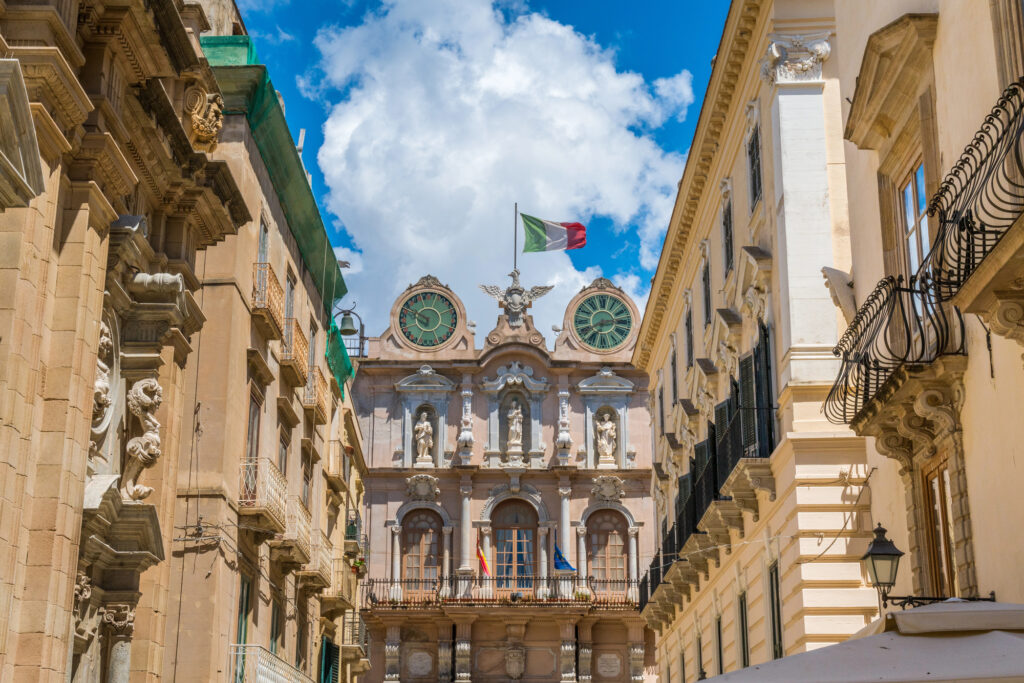
Winding your way through the labyrinth of alleys in Trapani’s Old Town, you can see and feel the Arab heritage today, with the smell of couscous hanging in the air and the sight of beaded curtains dangling in doorways.
The Arabs revitalised Trapani after it experienced a decline under the rule of a series of invaders that included the Romans, Visigoths and Byzantines. The Arabs enclosed the city with walls on all sides and developed the town’s production and trade of salt, tuna and coral, bringing it new prosperity.
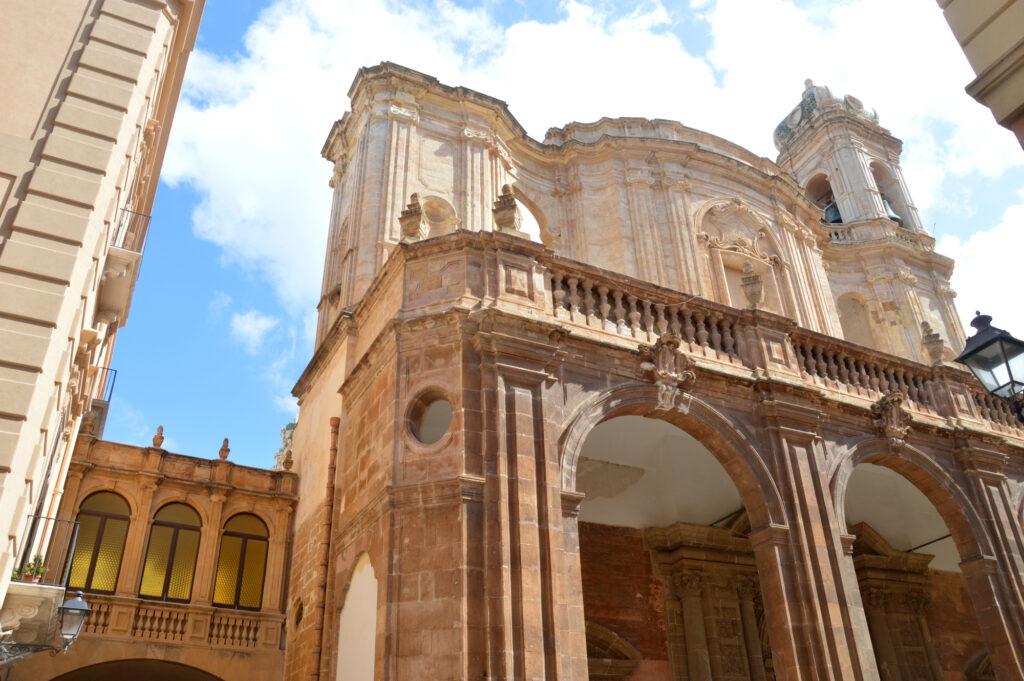
Despite this legacy, Trapani does not retain any ancient architecture as it was heavily bombed during WWII. That said, many splendid Baroque churches continue to be the centre of community life. Some of these can be found in the Casalicchio quarter, the oldest part of the city.
Park on the waterfront near Piazza Garibaldi and then make your way into the Old Town, which is largely pedestrian-only. Within just a couple of blocks, you’ll find two must-sees churches, the Cathedral of San Lorenzo and Chiesa del Purgatorio, both designed by 18th-century Trapani son Giovanni Biagio Amico, who was an architect and priest.
MOZIA
While there are many islands off Sicily’s coast, San Pantaleo makes a perfect day trip destination. Here you’ll find Mozia (also known as Motya or Mozzia), an ancient settlement that was first founded by the Phoenicians.
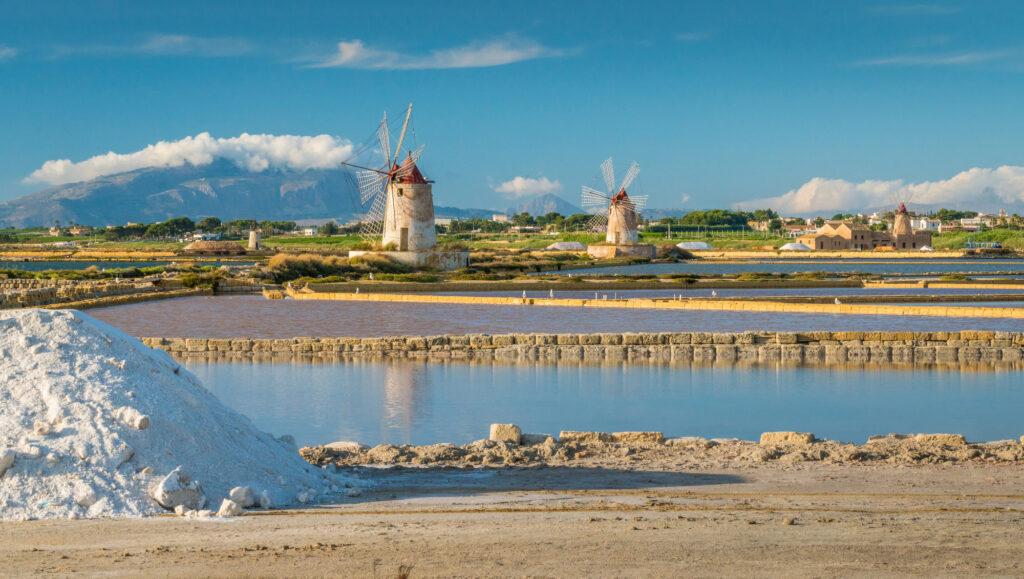
The city was eventually abandoned but was rediscovered in 1888 by Joseph Whitaker, an English-Sicilian ornithologist who inherited the Ingham Marsala wine business. Whitaker was an archaeology enthusiast and his home here is now a museum.
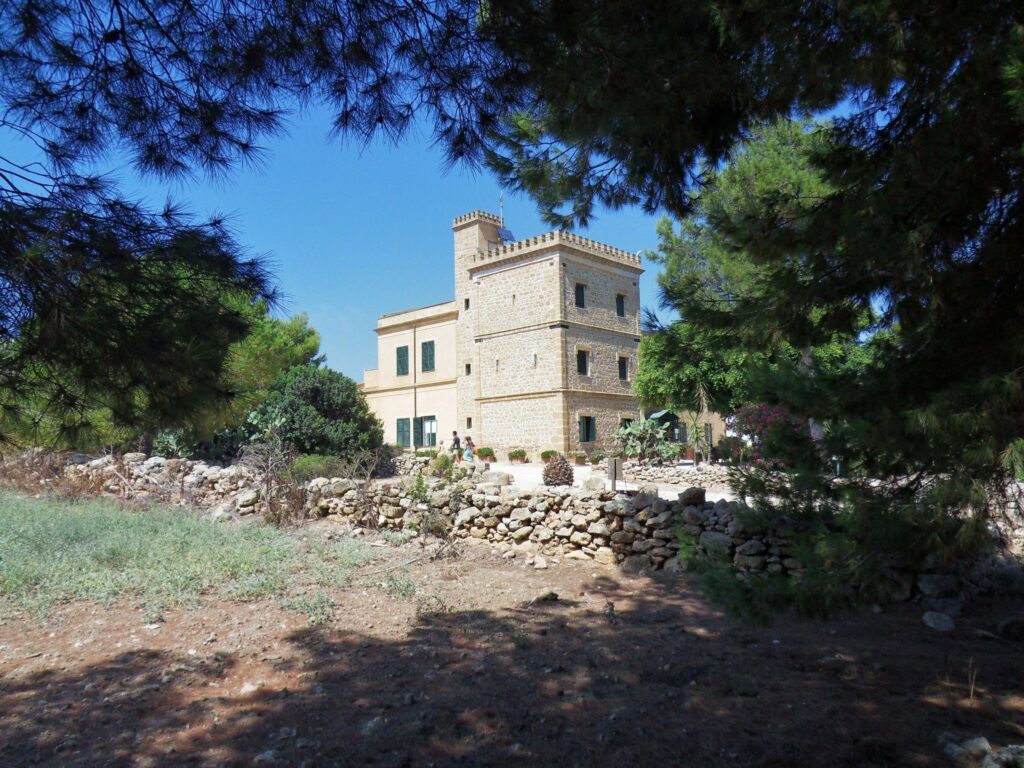
Visits to the archaeological park begin in the museum, offering a great introduction to the history of the Whittaker family and what had been a powerful city founded in the 8th century B.C.
A highlight of the Museum is the Motya Charioteer, a well-preserved statue from around 400 BCE that is simply exquisite. The statue was found in 1979, embedded in fortifications that had been built by the Phoenicians prior to the island being sacked by Dionysios I of Syracuse in 397 BC.
It is believed the statue must have been looted from a Greek city conquered by Carthage in 409-405 BC.
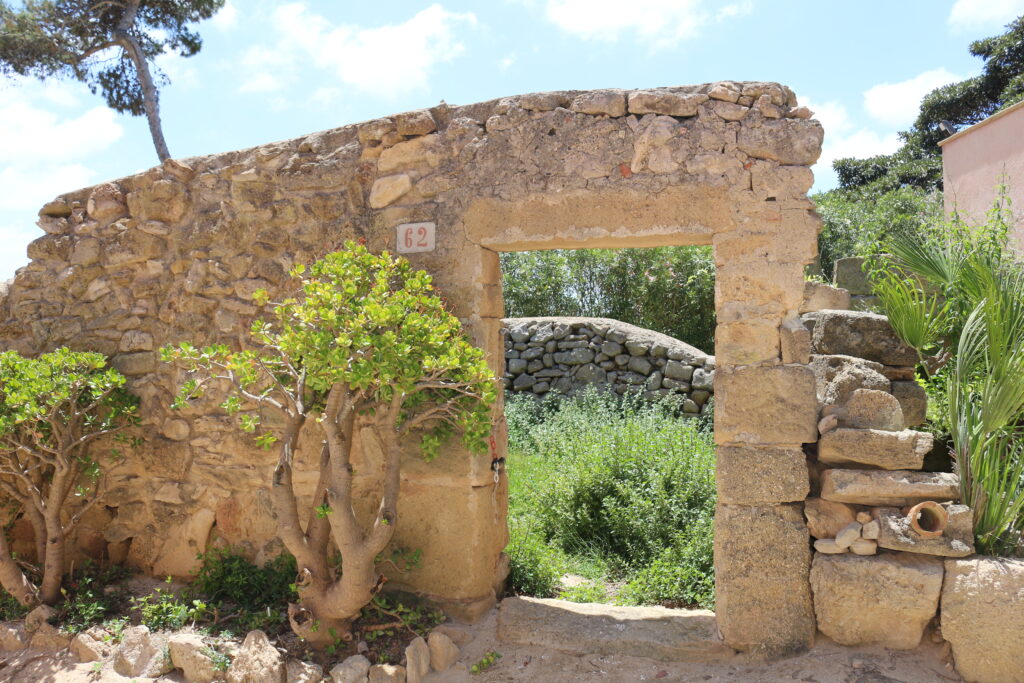
The open-air museum is an active archaeological site that can be toured in about 90 minutes. The ruins are well documented with signage and include fortifications, sacred areas, a necropolis, a villa with mosaics and another one known as the “amphora house” because of the large number of containers found there.
SELINUNTE
Head further south along Sicily’s western coast for at least a half-day at Selinunte. Home to a colossal archaeological park (the largest in Europe), covering almost 670 acres and more than 2,500 years of history.
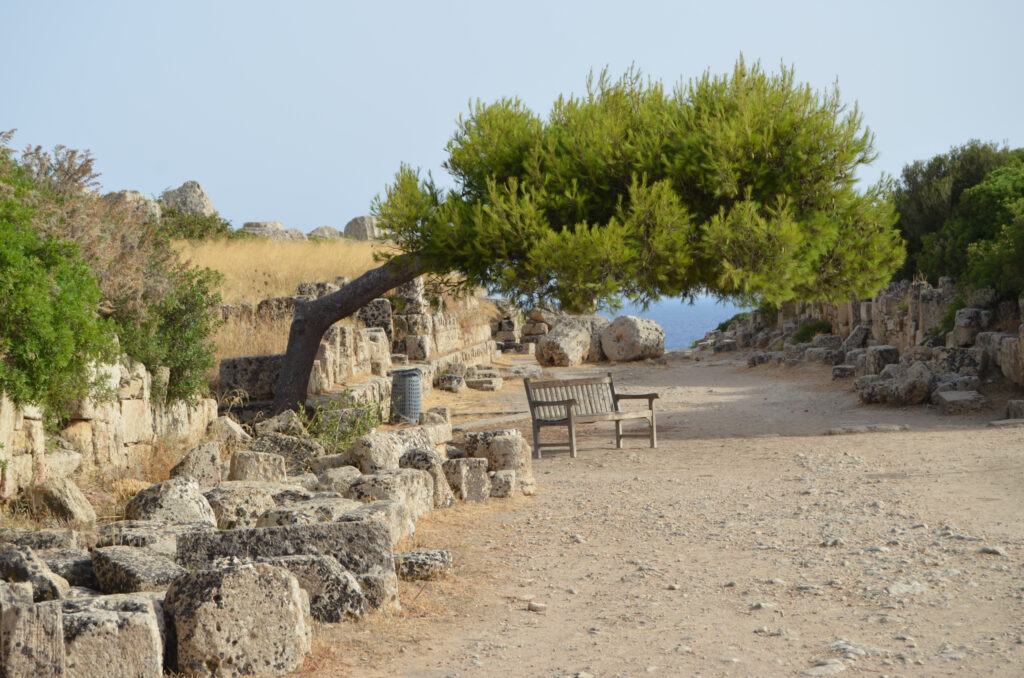
A Greek colony was founded here in 628 BCE and was one of the wealthiest Grecian settlements on the island. At the height of its powers, more than 30,000 lived here. Selinunte established relations with the Phoenicians also based in western Sicily, but got off on the wrong foot with the Elymian people of Segesta.
The ongoing hostilities ultimately led to the undoing of Selinunte more than 200 years later, when the Segestans called in help from Carthage. The Carthaginians sent troops 100,000 strong who slaughtered 16,000 Selinunte citizens and took 5,000 prisoners.
Fast forward another 160 years and Selinunte again got on Carthage’s bad side when it supported the Greek tyrant Dionysius I in his war with the Carthaginians. This proved fatal to the city, which was demolished and never rebuilt.
Selinunte Archaeological Park
What is astonishing is how powerful the remaining ruins are more than a couple of millennia later. There are four main areas to explore; the temples of the Acropolis, the temples of East Hill, Malophorus, and the Hill of Manuzza.
Covering all of these will take about four hours and bring you along five and a half kilometres. To what gods these temples were dedicated is largely unknown and debated by scholars, with the exception of the Temple of Hera.
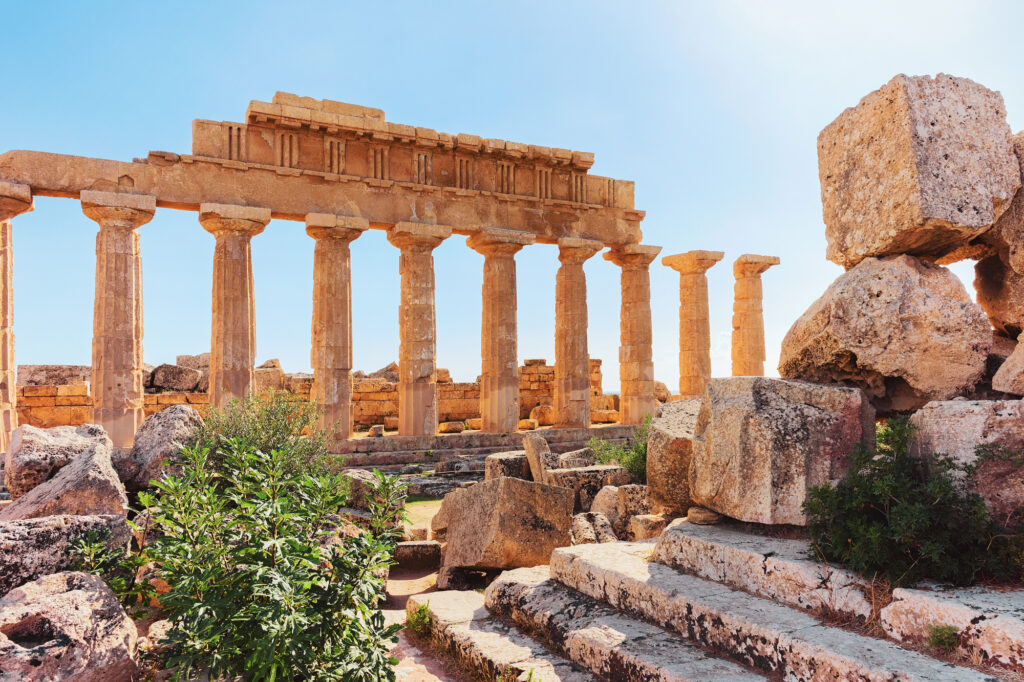
Start with the East Hill and temples E, F and G. Then head to the Acropolis, which is the site’s highest point with a cluster of five temples to behold: A, O, C, D and R. Conclude by visiting the Sanctuary of Malophoros and the remains of the village of Manuzza.
Tip: Be prepared for a long walk by wearing good walking shoes and bring a sunhat as there is little shade.
VALLEY OF THE TEMPLES
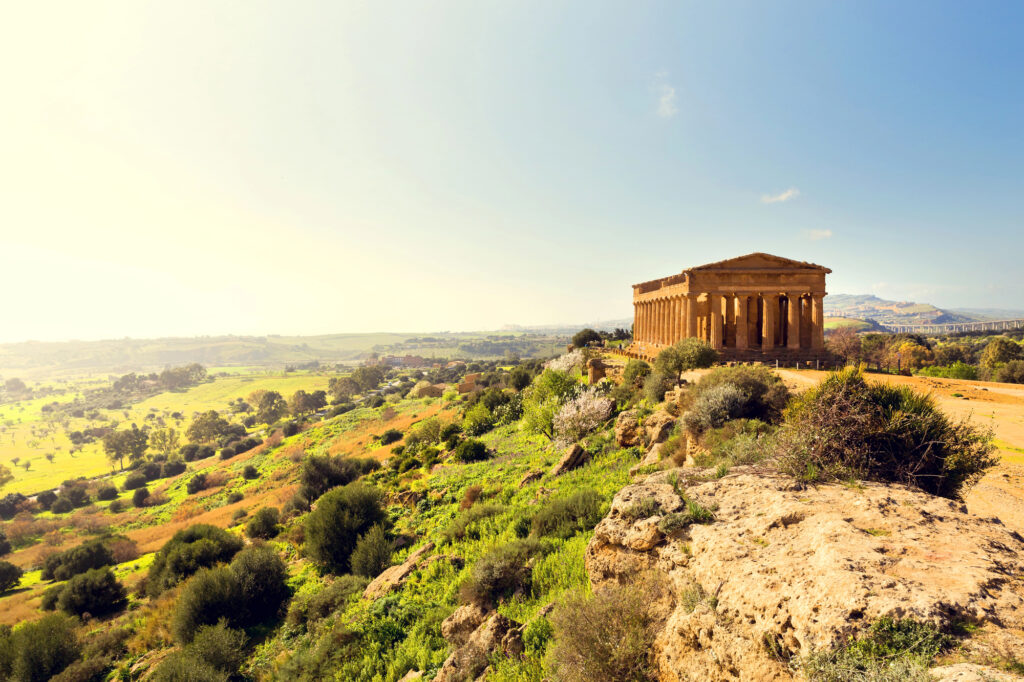
Another Greek colony, Agrigento is a UNESCO World Heritage Site. An hour and a half southwest of Selinunte, set aside a half-day to explore it.
It is home to the famous “Valley of the Temples” (though it’s actually on a ridge!) and consists of the remains of seven different Greek temples. Guided tours are available if you want to learn more.
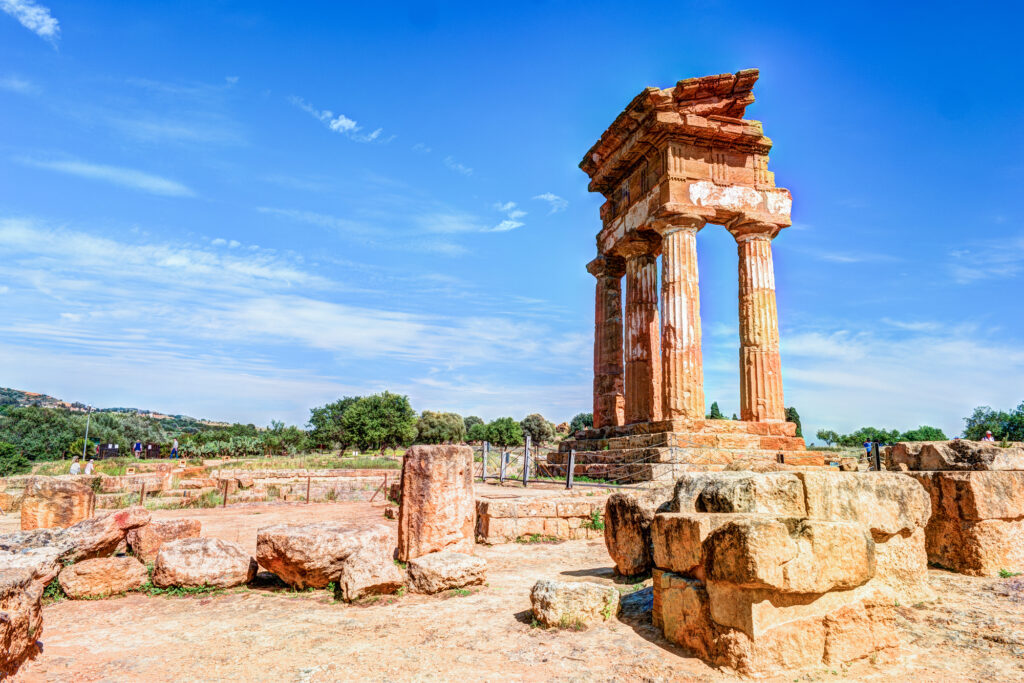
Argigento’s symbol is that of the Temple of Castor and Pollux, which has just four columns remaining. The Temple of Heracles once housed a bronze statue, a beloved symbol of the people who lived here.
Other temples were dedicated to Juno, Aesculpaius, Vulcano, and other deities. Back in the city itself, be sure to finish off your visit by checking out the local archaeological museum.
Tip: There’s also an unusual delicacy here: pecorino (sheep’s milk cheese) ice cream!
ROMAN VILLA OF CASALE
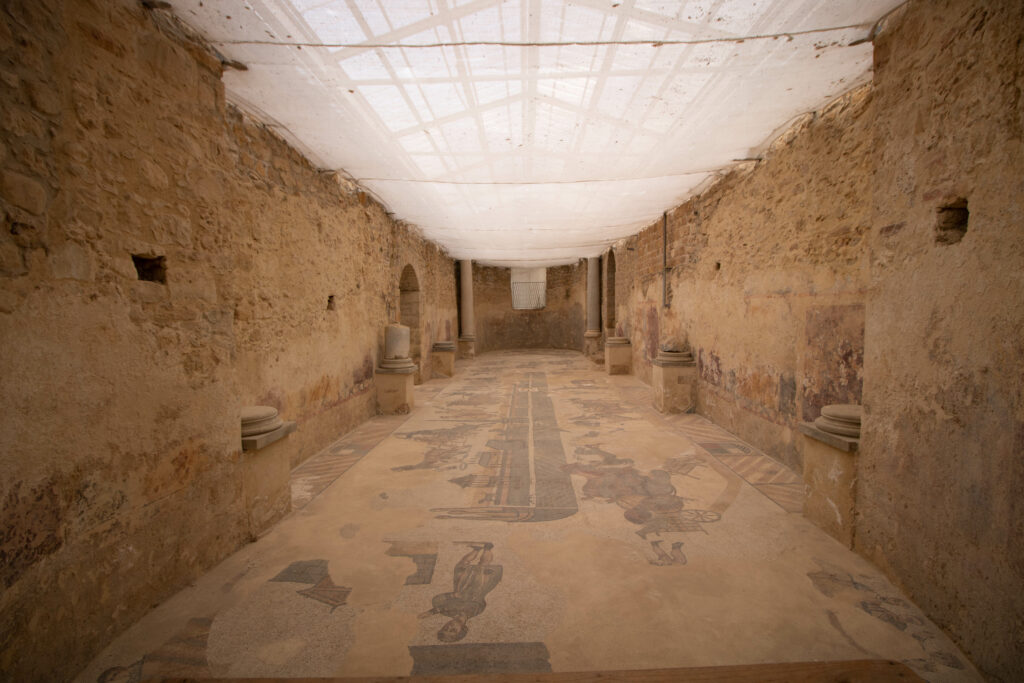
The villa is one of the most iconic symbols of the Roman Empire. These elaborate estates and beautiful buildings were often what the local economy revolved around.
An hour and a half inland from Agrigento, the Villa Romana del Casale is one of the best-preserved examples of this style. It is especially famous for its mosaics which cover almost 3,500 square meters and are astonishingly well-preserved. If you want to see what life was like for the Roman elite, this is the place to do it!
Rome first conquered part of Sicily during the First Punic War and consolidated its control over the island by the end of the Second Punic War. It became one of the breadbaskets of the Roman Republic and later the Roman Empire.
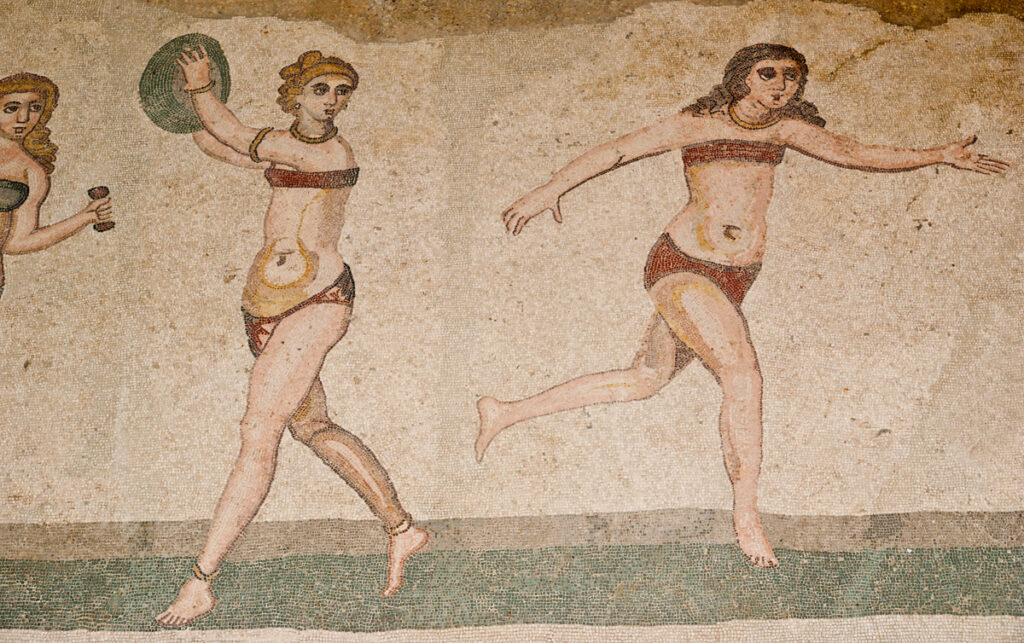
The mosaics of the Villa Romana show a fascinating mix of life and culture in Roman times. The “Great Hunt” showcases the Roman obsession with exotic animals, depicting beasts from Africa being hunted. Another room features the so-called “bikini girls,” shown exercising and dancing. Other mosaics show mythological figures, such as giants.
SYRACUSE
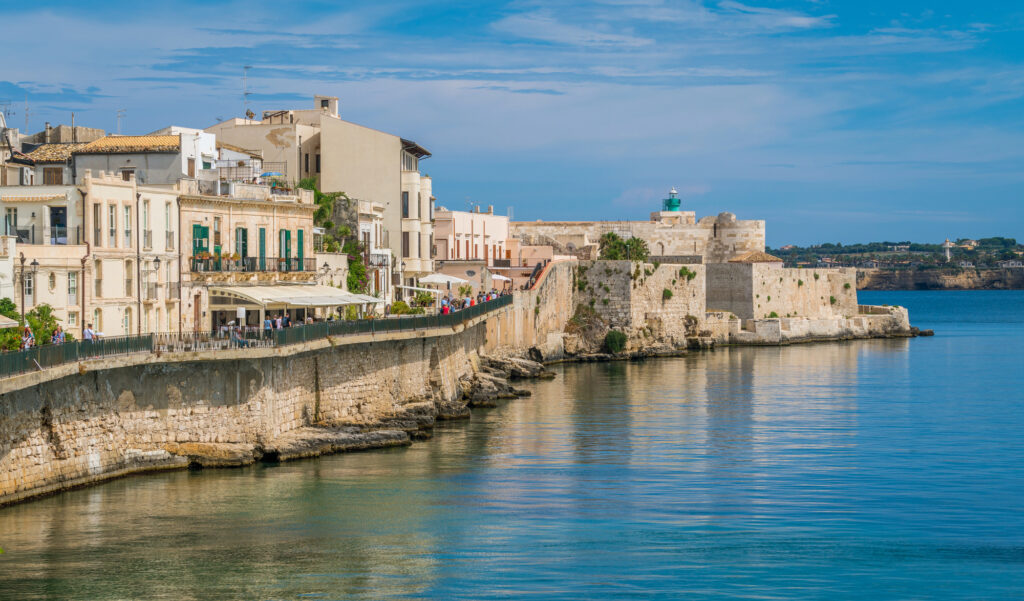
We’ve nearly wound our way around the island of Sicily. Syracuse lies on the southeastern corner of the island. Another Greek colony, at one time, was the same size as ancient Athens. Today, it is still a large city of over a hundred thousand people and is another Sicilian UNESCO World Heritage Site. It’s easiest to get there by car, and once you’re in Syracuse, there’s a lot to see & do.
Favourite Places to Stay in Syracuse
Parco Archeologico della Neapolis
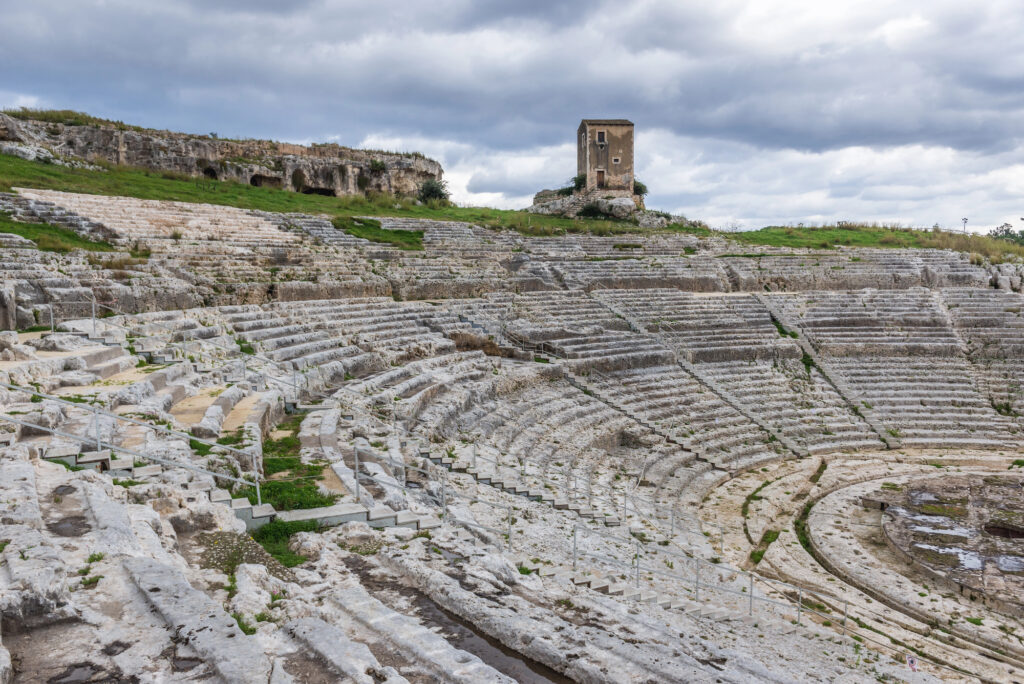
Parco Archeologico della Neapolis, located on the western outskirts of Syracuse, was once the site of a city of 300,00 residents. Today, it is a UNESCO World Heritage Site and home to some of Sicily’s most impressive Classical structures.
Plan to spend half a day here to see both Greek and Roman amphitheatres. The Teatro Greco was originally built in the 5th century B.C., and has a seating capacity of 16,000! Visit between May and July to witness classical Greek plays being performed.
The 2nd-century Roman theatre, unfortunately less well preserved, was used for other types of performances, namely gladiator battles and horse races.
Tip: While the ruins are evocative, to fully appreciate the site, we recommend taking a guided tour to learn about the historical and cultural significance of the preserved ruins.
Ear of Dionysius
The intriguingly named Ear of Dionysius offers a fascinating interactive experience. With an opening in the rock face that resembles a teardrop, the site is remarkable from the exterior. Yet when you go inside, you are in for an audio sensation too!
The chamber is 23 meters high and extends more than 65 meters into the rock. The width varies between 5-11m wide as it curves around in an “S” shape. The contours of the cave are credited with creating an acoustic flawlessness that means sound is echoed exponentially.
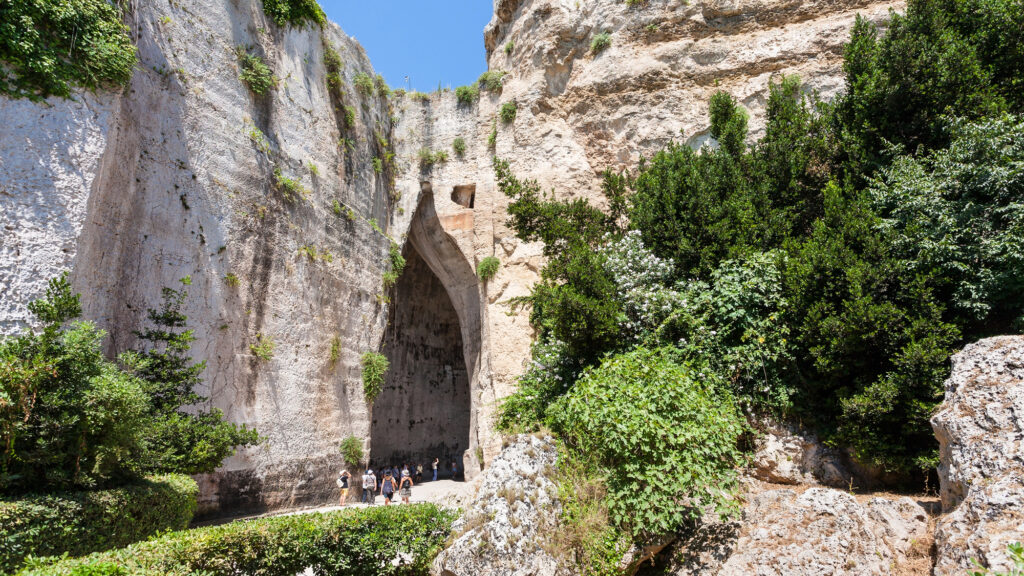
According to various legends, the 4th century B.C. Greek tyrant Dionysius leveraged this effect to his benefit. Lore says that he tortured prisoners here so their screams could be heard far and wide. Another tale claims he imprisoned his enemies here so he could listen in on their schemes. Because of this effect, the renowned painter Caravaggio coined its nickname in 1608.
Boat Tour of Syracuse Ortygia
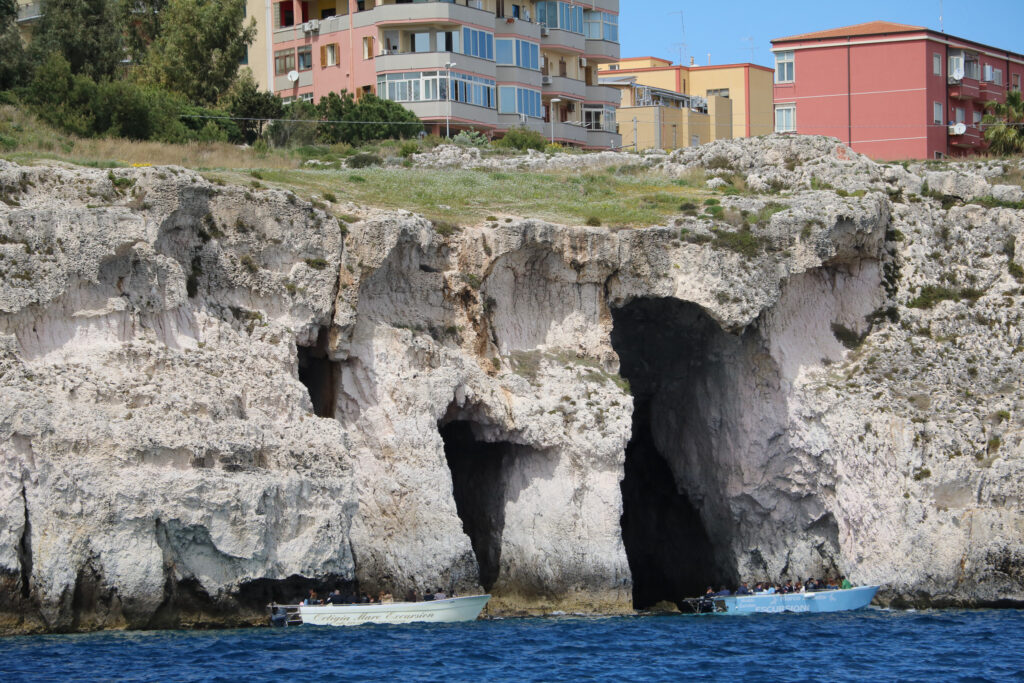
Ortygia was once the heart of Syracuse. Located on a small island just off the city, it’s home to many of the city’s most famous landmarks. However, one of the best ways to explore isn’t on foot, but rather on a boat tour!
This 1-hour boat tour gives you an introduction to the island’s coastal monuments and landmarks, takes you to see natural sea caves and even stops for a swimming break! All while being regaled with tales of the town’s past.
Castello Maniace Ortygia
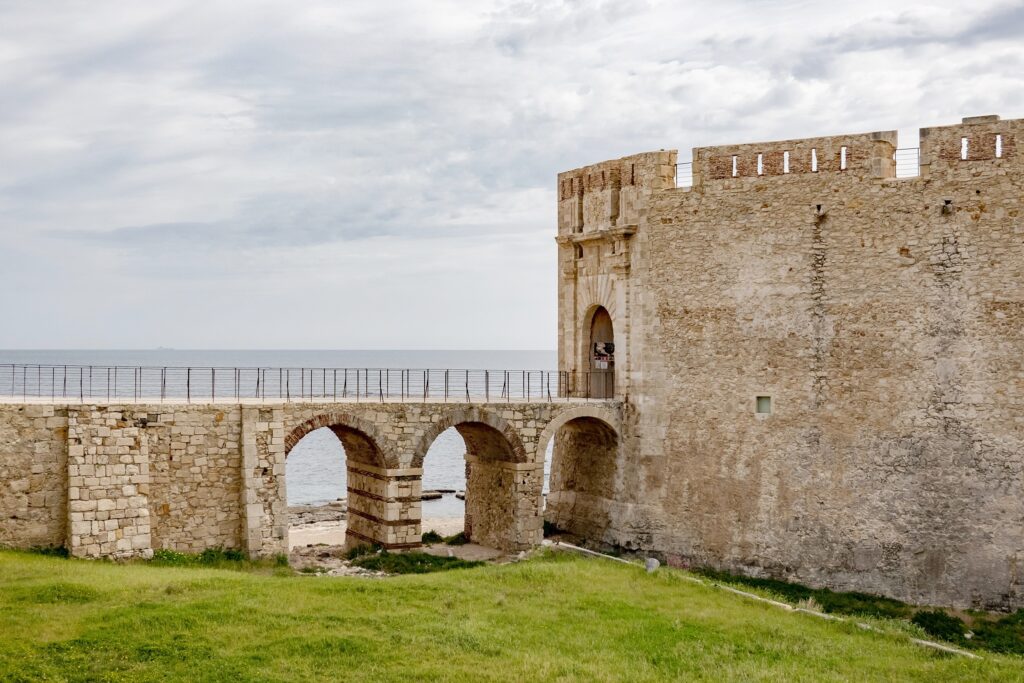
Built in the thirteenth century on the site of an earlier Byzantine castle, Castello Maniace controlled access into Syracuse’s harbour. It was used as a prison, a castle, and a fortress for the next several centuries, with later rulers improving on its fortifications.
It remained in use as a site for the military until the 1970s! For a fee, visitors can gain access to the castle and explore the grounds.
Palazzo Borgia del Casale Ortygia
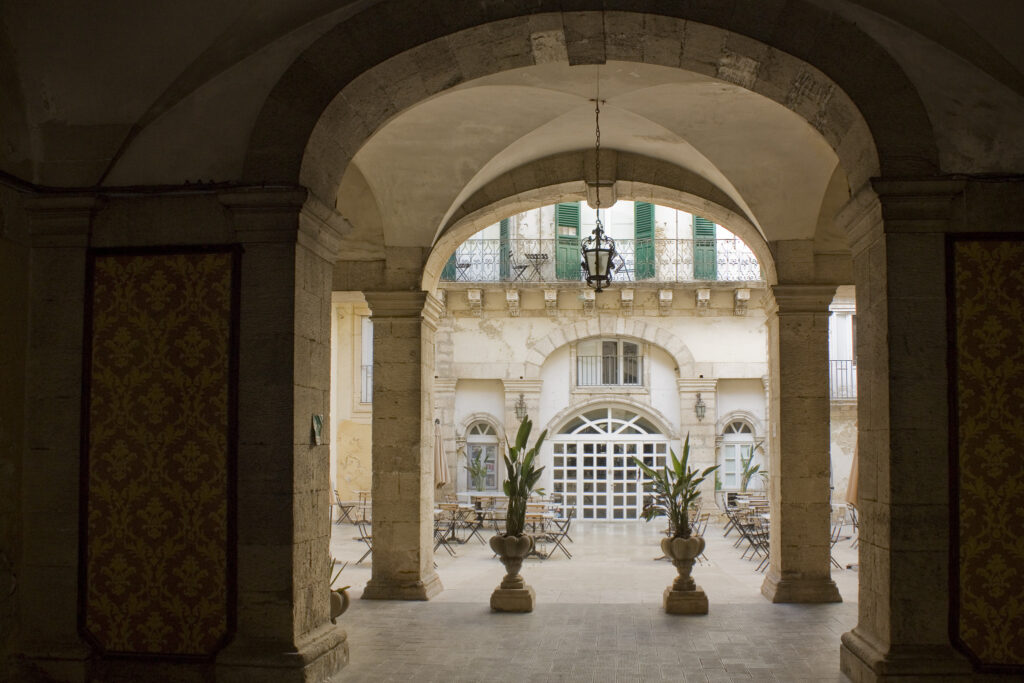
If you’d like to see some more “modern” architecture in Ortygia, the Borgia Palace, built in the 1760s, might do the trick!
Built on the site of an earlier Spanish manor, it is one of the best examples of Rococo architecture in Sicily. Baroque artwork, frescoes, and decorations make this one of the most beautiful places to visit in the city. With six different living rooms, there’s a lot to take in here.
Ortygia Jewish Quarter
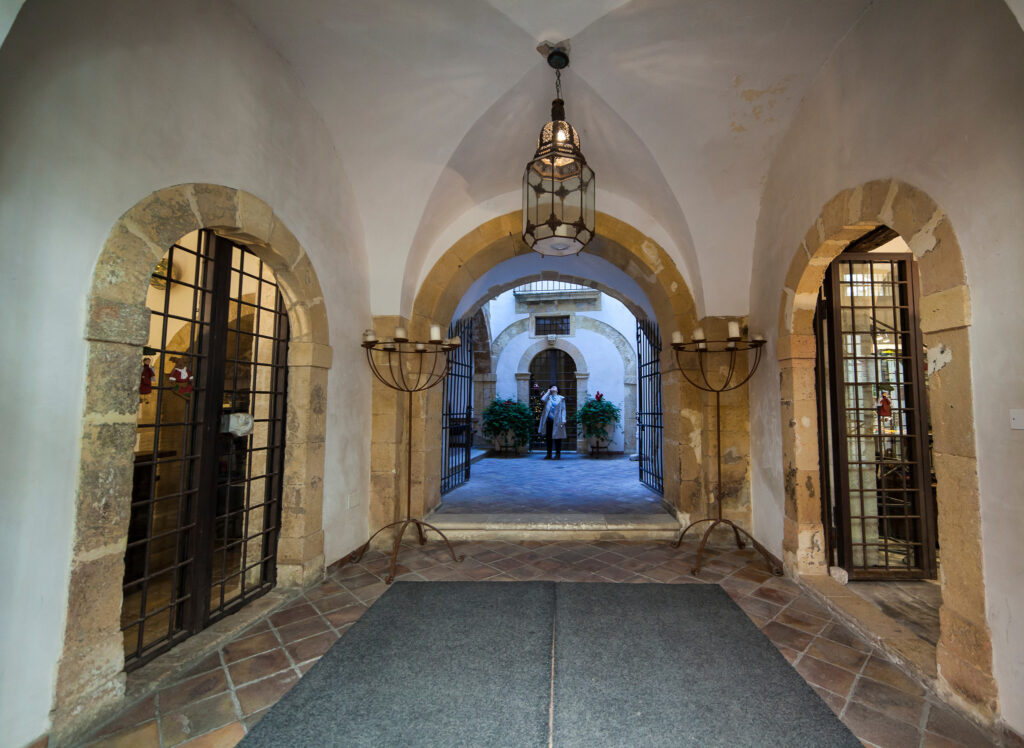
Jewish history in Syracuse is believed to date back to the 1st century and the fall of Jerusalem. At one time, the Jewish community in the neighbourhood of Ortygia was 5,000 strong, with 12 synagogues.
In 1987, an important piece of this history was uncovered during the conversion of an ancient palace into a hotel. As Residence alla Giudecca was being constructed, a limestone staircase was discovered that led to a subterranean room full of fresh water.
It was soon realised this was the site of a mikveh, a sacred purifying bath. The reveal of this ancient sacred space is particularly significant, as it is considered to be the oldest in Europe, dating to the Byzantine era.
CATANIA
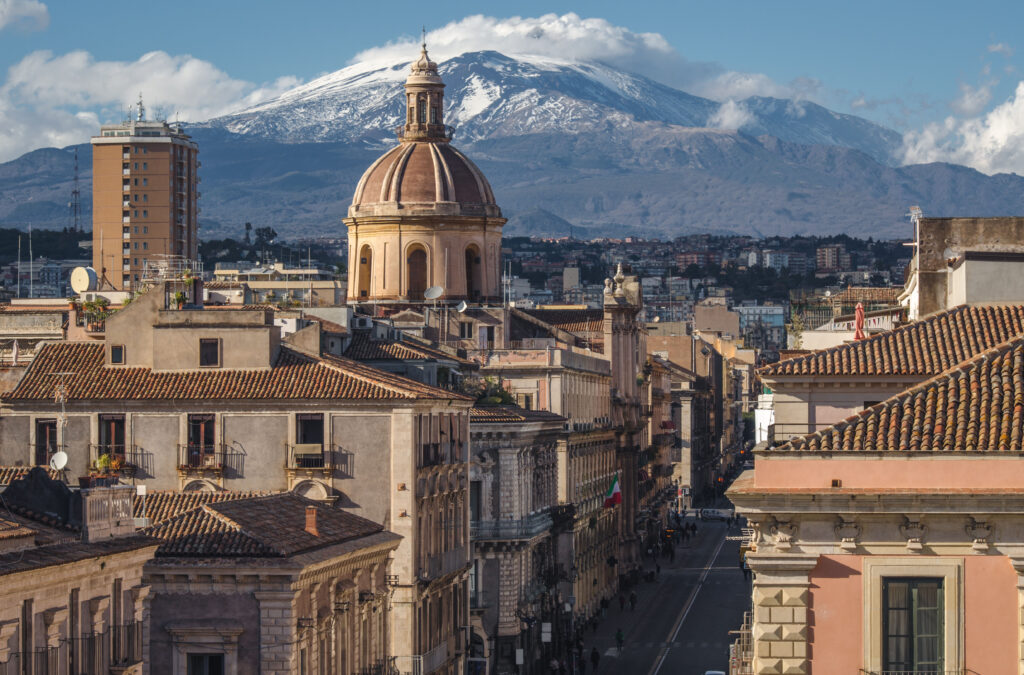
We’ve almost come to the end of our island tour of Sicily, and our last stop is Catania. An hour and a half to the north of Syracuse by train, Catania is the second-largest city in Sicily. The city’s skyline is dominated by Mount Etna, and the city has been home to some of the most famous of Italy’s writers. Like many of Sicily’s cities, it began as a Greek colony around the eighth century BCE.
Favourite Places to Stay in Catania
Piazza del Duomo
Piazza del Duomo is the main square of Catania and it gets its name from a nearby cathedral, the Duomo di Catania. The centrepiece of the piazza is the famous Elephant Fountain.
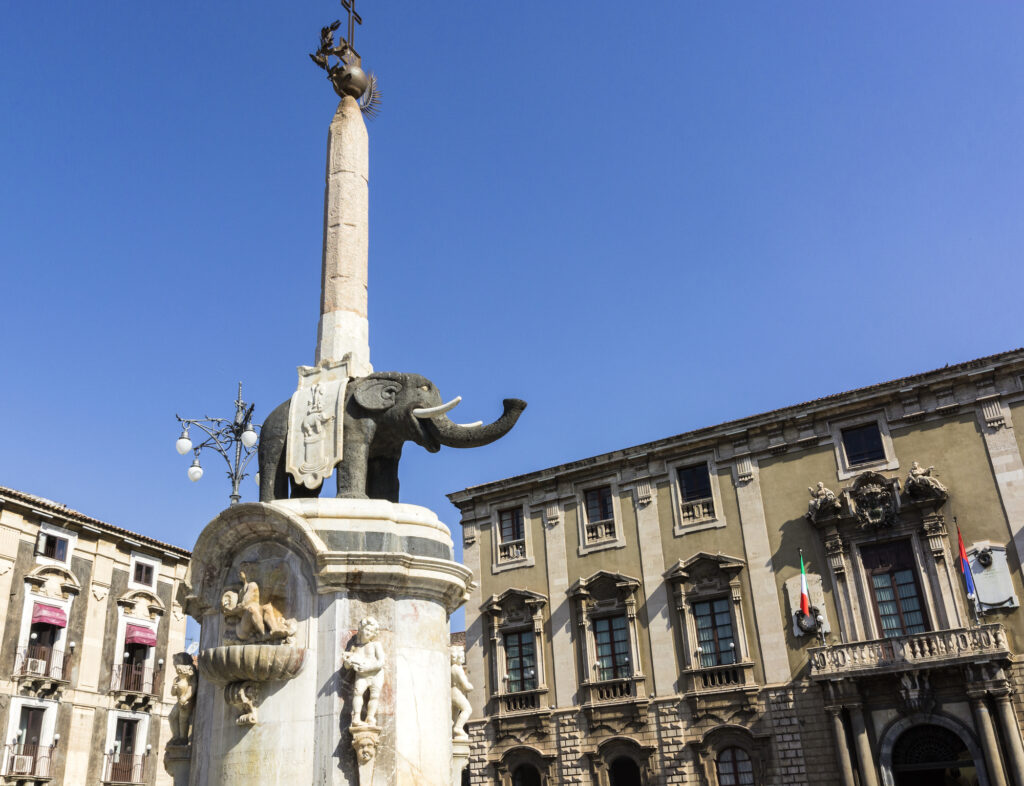
The Duomo is dedicated to Saint Agatha, who is buried in Catania. In the second century A.D., the 15-year-old from a noble family was a Christian who had taken a vow of virginity. Agatha was pursued by the Roman governor, whom she spurned. He reported her to the authorities for her religious views; this was during an era when Christians were being persecuted.
She was imprisoned and underwent horrific tortures, including having her breasts cut off. Today she is the patron saint of both Catania and those suffering from breast cancer. Each February, she is celebrated for three-days in the Piazza, with a procession, music and fireworks.
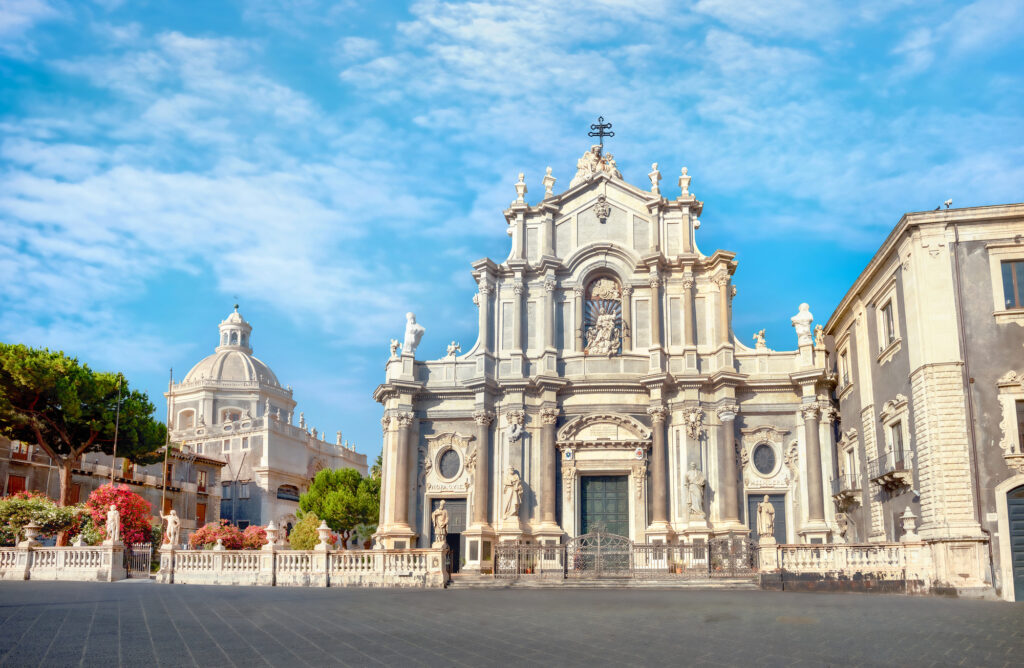
Across the street is another homage to St. Agatha, Chiesa Badia di Sant’Agata. This 18th-century church has an impressive interior but the real draw is the magnificent panorama afforded from its dome. The trek up the 170 steps is worth it for the cityscape and views of Mt. Etna.
Pescheria di Catania
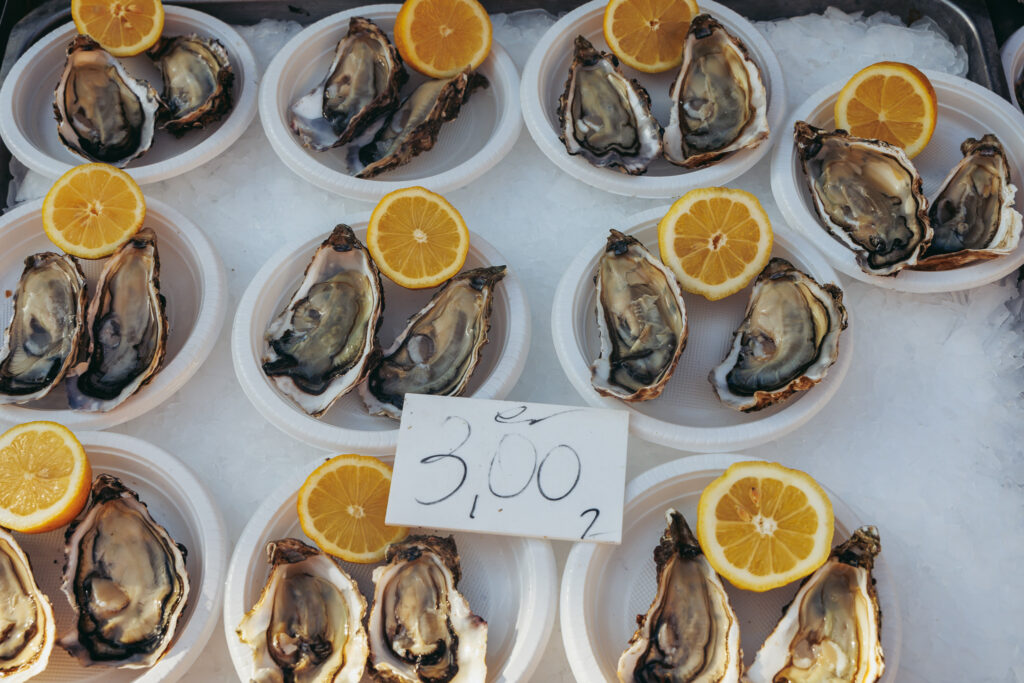
Sicily’s seafood scene is unparalleled, and Catania shares in the bounty. If you want to see one of the best fish markets in Sicily, the Pescheria is the place to go. Just off the Piazza del Duomo, you can watch the fishmongers ply their trade.
In case you’re not in the mood to buy your own swordfish to cook at home, seafood restaurants line the pescheria. Just don’t wear your best shoes to the market, as it’s a wet working area.
Teatro Massimo Bellini
Italy was the birthplace of opera more than four hundred years ago and the art form is alive and well in Sicily, which has a collection of gorgeous 19th-century theatres. Teatro Massimo Bellini is one of the most stunning and is said to have some of the best acoustics in the world.
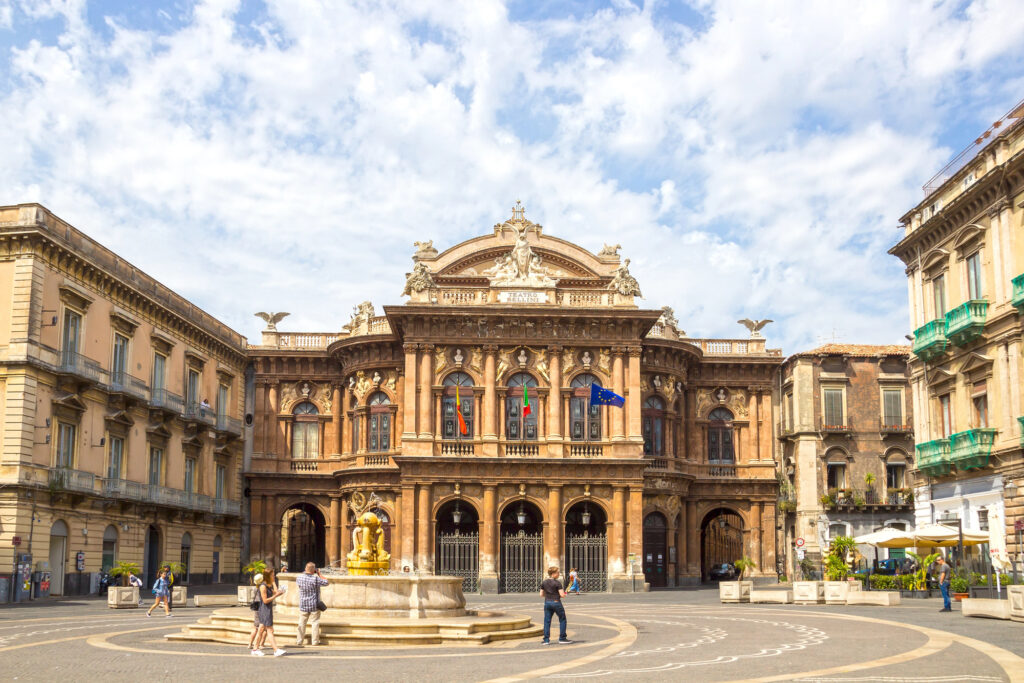
Opera houses came into popularity after the unification of Italy in 1860 when nationalistic pride fueled community arts. Named after Catania-born composer Vincenzo Bellini, the 1200-seat Teatro Massimo Bellini was inaugurated in 1890.
The exterior is in the Sicilian Baroque style, which not only features the typical Baroque curves and ornamentation, but is also known for its distinctive flamboyant flourishes like grotesque masks and putti, cherub-like figures. The glamorous interior is richly decorated with plush red seats, four tiers of opulent boxes and a fresco on the ceiling depicting allegories of four of Bellini’s major works.
Teatro Massimo Bellini is well worth a visit even if you don’t attend a performance.
MOUNT ETNA
Want a little excitement to conclude your epic journey around Sicily? Just over fifty kilometers from Catania, it’s a short trip to Mount Etna. For the best experience, take a guided tour.
Mt Etna, in all its power and grandeur, has inspired art dating to the days of Greek mythology. It is the largest volcano in Europe, standing at almost 3,400 meters and one of the most active in the world, almost constantly erupting. The name Etna is thought to have derived from the Greek word “aitho” meaning “to burn.” The Arabs called the mountain Gibel Utlamat, or “mountain of fire.”
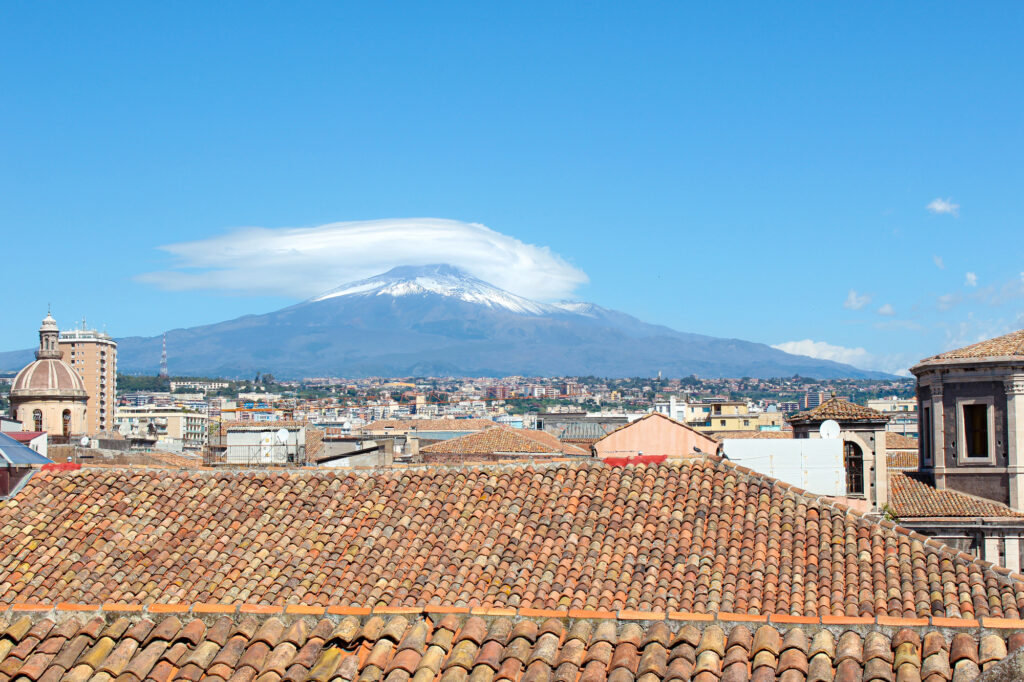
Mythologists sought to make sense of Etna’s eruptions. The god Aeolus was said to have imprisoned the winds in caves below Etna. According to the poet Aeschylus, the giant Typhon was confined within the volcano and the cause of its eruptions. Vulcan, the god of fire, was said to have had his forge under Etna. Other myths said Cyclops maintained a smithy there, where he fashioned lightning bolts for Zeus to use as a weapon.
When to Go and Tours
Humanity is still drawn to witness Mt Etna’s mystery and thousands of people make the trek every year. Given tourism flows and temperatures, May and early Autumn/Fall are the best times of year to make this excursion. Weather patterns mean the afternoons are typically cloudier, which can obscure the majestic view, so visiting in the early morning is best.
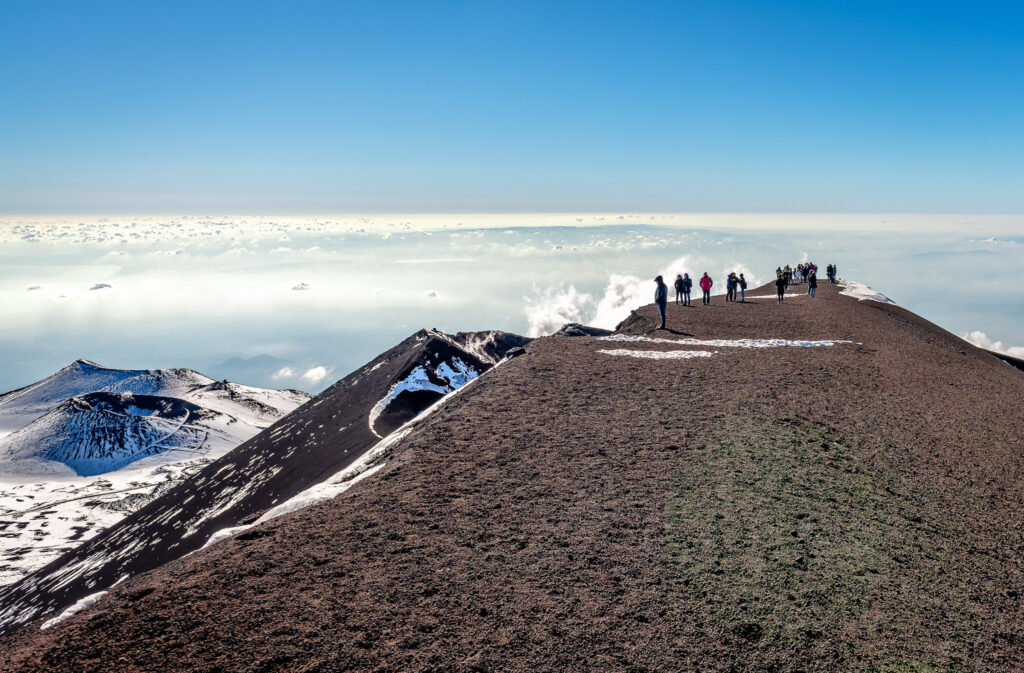
Half or full-day tours are available from Catania, Taormina and Messina. Whether you drive to Etna yourself or are picked up by a tour company, you’ll have to make your way to Rifugio Sapienza or “Etna South”. This is the tourism base and where the cable car departs for a hut that serves as the base for hikes up to the summit area, Torre Del Filosofo.
Hiring a guide to climb the summit is not just recommended, it’s required, and with good reason. Given that change is a constant in volcano territory, today’s landscape may be completely altered tomorrow.
Tip: This UNESCO World Heritage Site can be quite chilly regardless of the time of year you visit; it’s best to dress in layers. A note of caution: Scaling the heights of Mt. Etna can cause altitude sickness. If you begin to feel unwell, you may want to turn around and head for sea level.
I hope you’ve enjoyed this tour of some of Sicily’s cultural highlights! If you have a favourite spot or insight about Sicily’s cultural landscape or heritage, please pay it forward and share your thoughts in the comments below! Or, if you are contemplating a visit, feel free to pose a question!

